




















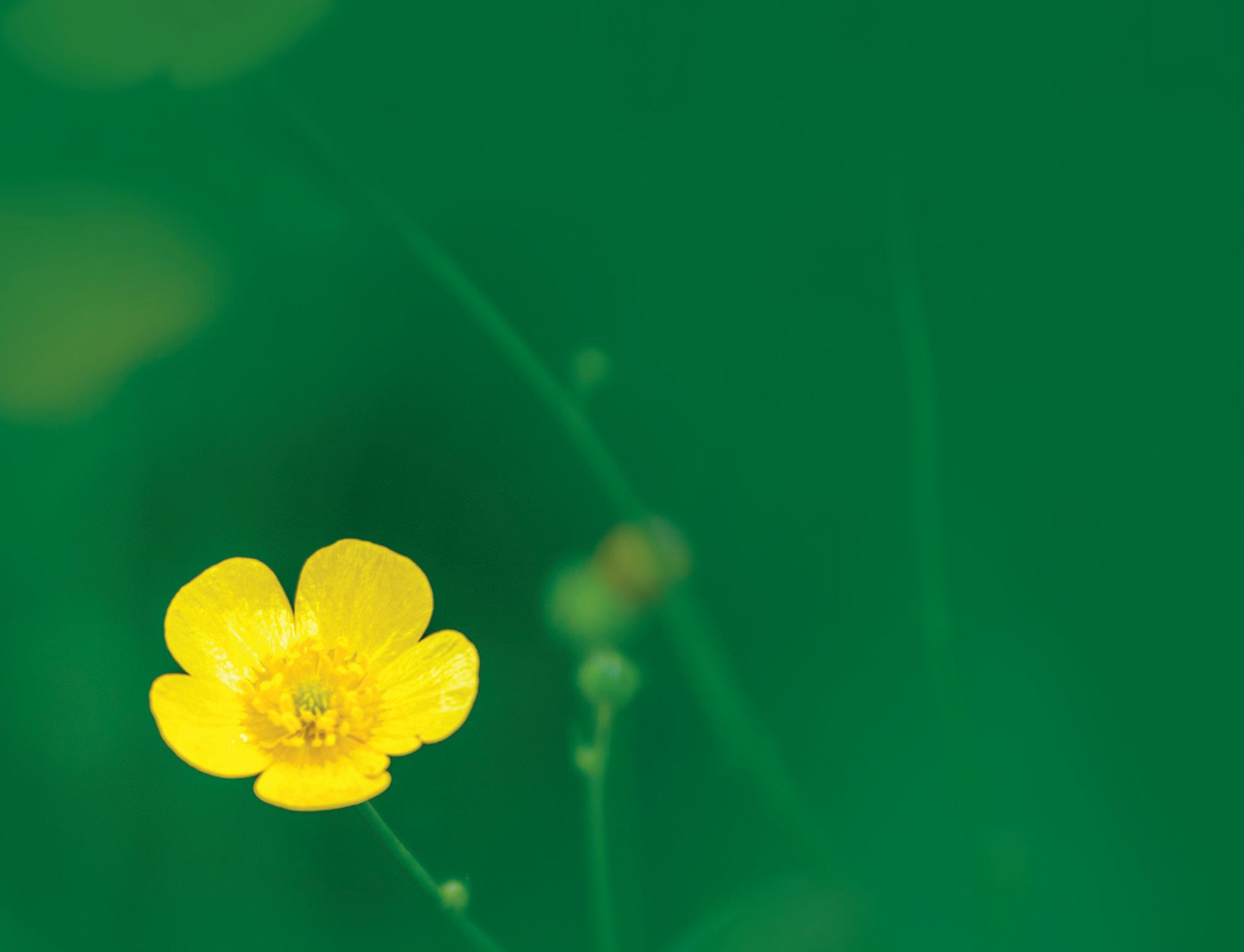






Sustainability report 2023






Towards a circular world, in a sustainable way

Towards a circular world, in a sustainable way






























Sustainability report 2023






Towards a circular world, in a sustainable way

Towards a circular world, in a sustainable way

In a world marked by geopolitical unrest and turbulence in primary materials markets, we are facing challenges that require innovative solutions and robust leadership. Once again, it is important to stick to our sustainable development and circular economy principles.
The circular economy is the central theme of our efforts to ensure materials retain their value for as long as possible. The more we produce green primary materials and green energy, the more we contribute to decarbonisation. After all, a low carbon economy is also a low material consumption economy.
As a producer of net renewable energy, we have made the right choice. We are setting an example by avoiding negative environmental impacts, by investing in safety and by conforming

| David Vanheede, CEO Vanheede Environment Group
pro-actively to the CSR directive which requires European companies to be more transparent about non-financial performance from 2026. Our Management Manual, in which we explain our organisation and our strategic choices for a sustainable future, serves as our compass.
Our enthusiastic employees are at the heart of our family firm. We strive to ensure them peace of mind and job security, in the knowledge that their commitment and flexibility are essential to our growth and our innovation. In a sector in which profitability and sustainable development go hand in hand, we invested record sums in 2023 to take our circular solutions even further. Efficient plants equipped with the latest technology (artificial intelligence, computerisation and automation etc.) show just how committed we are to progress.
So as we think about the challenges and opportunities the future holds, we remain determined to continue on the same tack.
Together, we are building a circular world in which economic growth and sustainable development go hand in hand; our company is showing the way.
Thanks to all our stakeholders who continue to inspire and motivate us, we face the future with confidence.


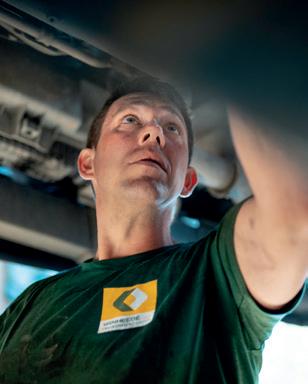








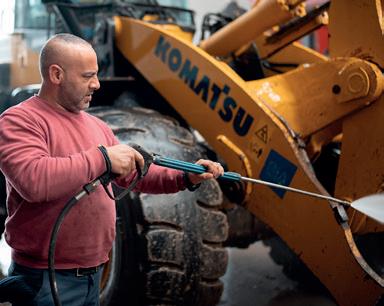


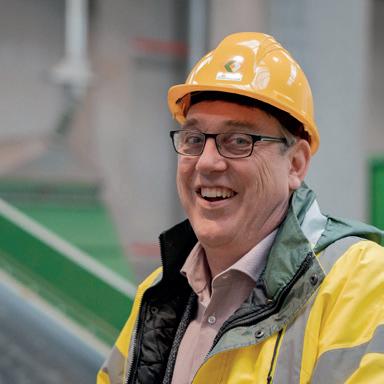
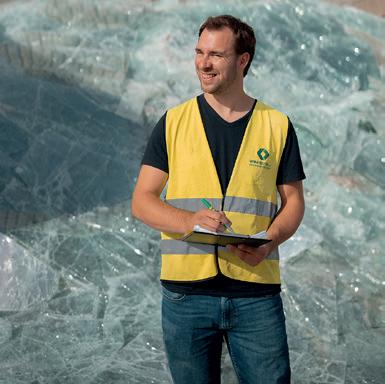


INTRODUCTION
Page 8
→ Recognition for our efforts
Page 9
→ Our key figures
1
2 4
3 5
→ Vanheede Environment Group → Who we are → What we do → Our vision → Our mission → Our culture and our values → Our strengths → Our three driving forces → Our strategy → Our business model → Our policies → Our goals → We protect the environment → We have each other’s backs → We adhere to the principles of good governance → We want to protect our healthy financial situation → The Business Units and Group Support Services form a strong group → Innovation, an improvement factor
→ Pushing back climate change → Vanheede’s Carbon Modelling journey → Our transition to an electric fleet of vehicles → Making our fleet of trucks greener → Smarter and more economic on the road → Materials use and the circular economy → Own waste streams → The best destination for your waste → Raising awareness → Reducing our environmental footprint
→ Innovation in our training policy → Together for mission zero → Our Safety Days for a safe working environment → Even more flexibility for our employees → The valorisation of our colleagues through the “Committee for a Pleasant Working Environment” → Women in Recycling → Towards more multicultural diversity and inclusion → Our official reporting channel for whistleblowers → Opportunities for all → How we interact with our neighbours → Our local charity work → A long-term partnership with the Special Olympics Belgium → Maximum traceability in our value chain
→ Major investments in the circular economy → Up and running soon: our brand-new automated sorting line in Rumbeke → Vanheede opts for an electric crane → €2.4 million invested in fire prevention at Haven Zuid Roeselare → Progress of expansion works at Billy-Berclau → Long-term redevelopment at Quévy → Financial results
→ An in-depth look at our organisational structure → Sustainability report: approach → Measuring points → General disclosures
“While my name may be on the title, I see this more as recognition for the work of my family and our colleagues.”
Caroline Vanheede, Commercial Director

On International Women's Day, readers of Made in West-Vlaanderen voted Caroline Vanheede Best Entrepreneur in West Flanders. After a selection period, the many nominations were whittled down to a shortlist of five and she won the final vote.

Certification in quality, environment, corporate social responsibility, security and strategy
A silver medal that shines even brighter!









EcoVadis has revised its assessment criteria to comply with ever stricter standards and legislation in terms of sustainable business practices. For 2023, we received a silver medal. Thanks to this recognition, Vanheede Environment Group is in the top 13% of the most sustainable companies in our sector.











1.8 1,214,149 tonnes

tonnes 217,253 kEUR
employees consolidated turnover of new raw materials green energy produced for 21,788 households
tonnes 76,257 MWh 98.44% recycling and valorisation of collected, sorted and treated waste collected waste streams of CO2e emitted types of waste streams per collection address





















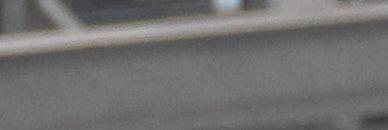















A CULTURE OF CREATIVITY AND ENTREPRENEURSHIP RESULTS IN A STRONG COMMITMENT FROM OUR EMPLOYEES.

passionate green heroes
FTEs in R&D employees directly involved in innovative projects
How we contribute to the UN’s SDGs
In order to maintain our market position, we must develop proactive solutions for the environmental challenges of the future and offer sustainable value to our customers and society in general.









Today, Vanheede offers its almost 20,000 customers - mainly companies (B2B), governments and inter-municipal cooperations - a sustainable, effective and economic waste management solution. We play a key part in creating a circular economy by turning each* waste stream into new green primary materials or green energy, in our processing plants and third-party sites. These green primary materials and this green energy can be used to make sustainable products with a low impact on tomorrow.

Vanheede Environment Group is... |
in the top 5 companies in Northern France and Benelux. The group employs more than 900 people, spread across 20 sites in Belgium, Luxembourg and France. Each year, the entire group of companies processes more than 1.2 million tonnes of waste. 98.44% of this waste is recycled or upcycled.

As an integrated environmental enterprise, ... |
Vanheede Environment Group manages more than 2,600 waste streams under the motto “Towards a Circular World in a Sustainable Way”. Thanks to its efficient processing plants, it can guarantee the production of more than 76 million kWh of green energy, enough to supply 21,780 households, and we produce about 655,188 tonnes of new, green primary materials. Vanheede Environment Group has a consolidated turnover of more than € 200 million

Our operating area
Our sites
Bruges (Oostkamp)
Roeselare (Rumbeke) Ghent
Wervik (Geluwe)
Lille (Marquettelez-Lille)
Lens (Billy-Berclau)
Headquarter
Mouscron (Dottignies) Nivelles
Mons (Quévy)
Wanze (Vinalmont)
Arlon (Messancy)
Luxembourg (Rodange)
We provide waste collection services and consultancy, container hire and transport services for various types of waste, from household waste and the like to special and hazardous waste. We offer our customers bespoke sustainable waste management and recycling solutions.


In our industrial sorting plants, mixed waste streams are automatically sorted into different categories depending on their composition and characteristics.
In our processing plants, we turn waste into quality raw materials and products that can be reused in the circular economy. What can’t be converted into primary materials is converted into energy to replace fossil fuels. Final waste* is stored in our state-of-the-art landfill site.


*Final waste: the residual waste that remains after all our recycling efforts and which, because of its properties and/or composition, cannot be reused or recycled and ends up being incinerated or being sent to landfill.
We are developing new technology to convert renewable energy sources into electricity, gas and heat, optimising existing plants and exploring new possibilities in the carbonfree energy field.


Vanheede wants to be a leader in the transition towards a circular world in which resources are (re)used in a responsible and efficient way.
Furthermore, we also want to run our own business in a sustainable way and so we want to minimise our negative impact on the environment.
We believe that we can achieve a truly circular world through innovation and collaboration.


We offer our customers the most efficient solutions in the management of waste, green resources, green energy and environmental management.
A high-quality, professional and innovative approach with added value for all stakeholders is the norm.
As a sustainable company, Vanheede Environment Group wants to be a fully-fledged partner in the circular economy.
Sustainable entrepreneurship means that, with a minimum negative impact and a maximum positive impact on the environment, we achieve the best results for our customers, employees, shareholders, the governing body, government, subcontractors, suppliers, banks and insurance companies, local residents and the media, etc.

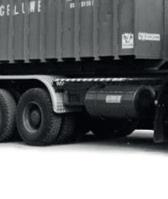



Vanheede Environment Group has its own unique character and culture that have been at the heart of the company since 1968. The values of that era are still reflected in the way we do business today.

The Vanheede culture, underpinned by our values, has developed organically. We are a family firm and we listen to each other. It’s by listening, observing and taking carefullythought-through decisions that the values of our company were shaped and hold true to this day. We seize every opportunity to strengthen our culture. Without us really thinking about it even, our corporate culture has had a considerable impact on our strategy, ensuring the durability of our fundamental values, our culture and our strategy too.
The specific traits of the Vanheede culture are a family culture, V-power, a good balance between formal and informal management and giving things time.
We keep our promises
We contribute to developing a better world

A culture of creativity and entrepreneurship results in a strong commitment from our employees.

Materials are given a second life at our sites. This way we have a positive impact on the climate and our environment, now and in the future.
We are a family business
We are developing a sustainable future
We are all proud ambassadors of our company

Welfare, health and safety, as well as job security, diversity and inclusion constitute absolute priorities. We recognise talents and give them space, in all confidence. Mutual respect is at the very foundation of our cooperation.


Every one of us makes the difference, for the stakeholder, the company and for himself. Profit is the oxygen that allows us to invest, innovate and organise in a clever way.
We fulfil our ambitions in a transparent collaboration. By doing this we stay faithful to our culture.
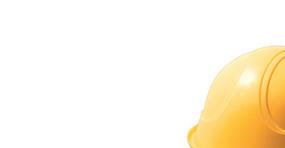












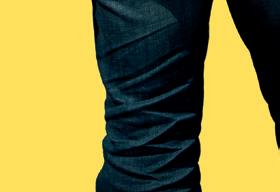

as an organisation in terms of services in terms of recycling



A passionate organisation


For 55 years we have nurtured our reputation for providing careful, attentive and reliable service and flexibility to our loyal customer base.
Transforming waste streams into secondary raw materials and energy is a sustainable activity in itself. In our view, it is just as important that it takes place sustainably. Our five values - passion, planet, people, profit, pride - are the leading considerations in everything we do.
With our own R&D teams, we have a wealth of expertise with regard to the design and engineering of sorting and waste processing sites, which we apply to ensuring that they are as CO2-neutral as possible.
We deliberately take a global approach, but with a regional focus. This pertains both to processing options as well as to our policies to ensure that our services and activities are in compliance with local laws and regulations. We opt for five-star environmental services.


Whatever sector they are active in, our customers can rely on us for every aspect of waste management, from garbage bags and dustbins to dumpsters and roll-packers, and from signage and waste coaching to reporting.
We help our customers manage their own waste efficiently by equipping them with a range of tools, from signage to our myVanheede customer portal and Vanheede Plus app. This makes it easy for them to monitor and organise their requirements in a user-friendly way, whether they need to keep track of one location or hundreds!

High-quality green primary materials with the best valorisation rate
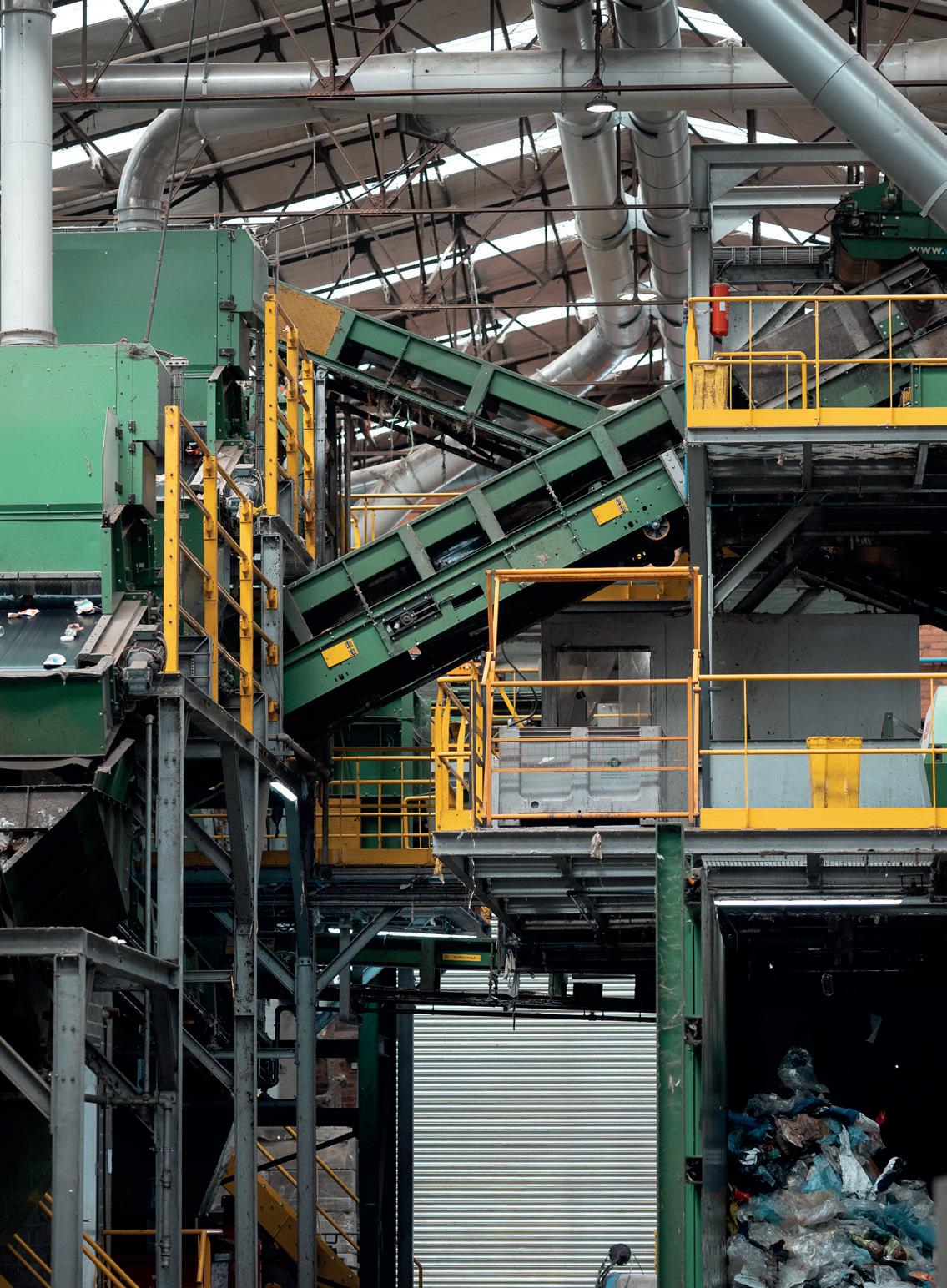
Our material recovery division determines the appropriate sustainable destination for every type of material we collect, whether processing is carried out by own companies or externally. It performs an independent role with regards to this. One important factor we always consider is the distance from the source to the destination.
We continually invest in our own sorting and processing activities for mixed business waste, organic materials, plastic and high calorific waste. We guarantee transparency in the value chain for the waste we collect, and act as a partner to many other collection services in the circular economy.
We have in-house expertise and technology for converting waste materials into high-quality products for use as new, green resources and/or alternative fuels for industrial use.


The three main points on which all our stakeholders see eye-to-eye are:

Playing our role within the circular economy to the full
Adopt a low impact approach
Both in collecting and in processing waste. The value of resources must be kept as high as possible for as long as possible. So we need to be innovative in developing services, products and processes. To do that we need to use new techniques and technology. We need to maximise our positive impact and our added value.
We avoid as much (residual) waste as possible ourselves. We need to strive to use renewable energy in our activities, and the products we buy should preferably be made out of green resources. We emit as little CO2 as possible and we find a green destination for our emissions. At the same time, we need to continually reduce the energy intensity of our activities. We also need to be more mindful of our impact on the air, water and biodiversity. We must minimise our negative impact.
Whether this is about our employees, our customers, our shareholders, our suppliers or our neighbours, it matters to us that everyone should be happy. We do have an impact on society. We help create new jobs and develop talent through the necessary training and education. We work towards adequate diversity and avoid discrimination. We strive to ensure our customers are satisfied and our employees are loyal to the company. They are the best ambassadors for our company.
steers us … towards a circular world,
As environmental services service-providers, we are focused on our three areas of expertise: collecting waste, sorting and treating waste, and producing renewable energy. Through these activities, we hope to continue to increase our positive impact on the environment and those around us and offer our customers maximum support in moving towards a circular economy.
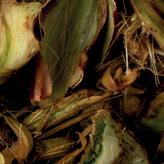

The groups of waste to which we want to pay particular attention are the waste streams we sort and/or treat within our own group of businesses in order to recycle them as much as possible: organic waste, plastic waste, mixed waste and special and hazardous waste.




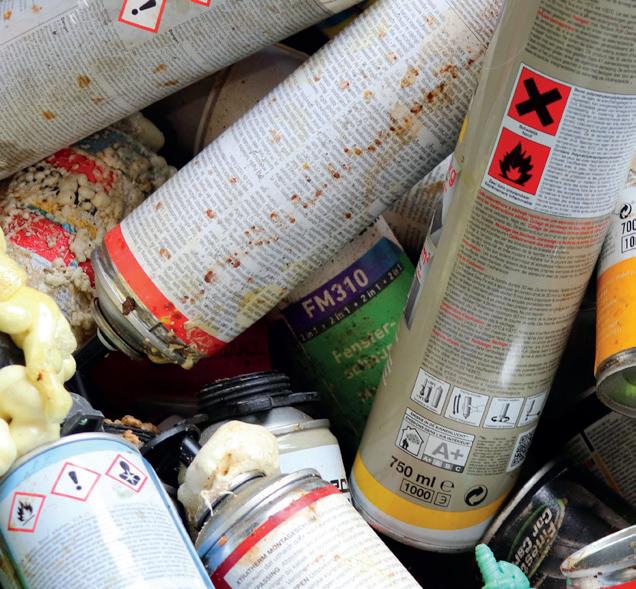


Vanheede Environment Group is committed to integrated waste management in a circular economy. We are involved throughout the value chain, from collecting to sorting, to treating or recycling waste and to final waste disposal.


1. Raising awareness among our customers and governments
Thanks to our vast knowledge of materials, techniques and markets, we play an essential role in raising awareness about the importance of managing waste in an efficient way that is respectful of the environment, by stressing the need for sorting at source. By concentrating on specific customers and segments, we are able to expand our expertise, and thus our impact.
2. Setting up partnerships to which we can bring real added value
At Vanheede, we seek to bring together the key players in the value chain: from suppliers of raw materials to producers and logistic services serviceproviders, not forgetting consumers and the place where waste is generated. In this way we hope to better complete the material circle and identify problems or opportunities much more quickly.
3. Selective collection and sorting of waste with a view to treating it
The selective collection of hazardous and nonhazardous waste, focusing on commercial waste, is the very essence of our company. Once collected, we also handle the sorting of waste and its transport to treatment sites, both in-house and third-party.
4. Recycling waste and turning it into high-quality, alternative materials
During the recycling of collected waste, we aim to achieve maximum recycling levels. By adding to our knowledge about materials and focusing on innovation and new treatment techniques, we are able to produce high-quality materials and products that can be used at the same time as traditional raw materials.
5. Sale of recycled and high-quality “green” primary materials to processing centres and manufacturing companies, etc.
A market just for selling recycled materials is essential if we want to sustainably preserve natural resources. The demand for quality "recycled content" continues to grow, which further encourages recycling and business opportunities. A thriving sales market also reduces greenhouse gas emissions and prevents recycled material from being incinerated or sent to landfill.
6. An end destination for non-recyclable waste or final waste
Final waste is sent to specialist processors for later processing or stored in an energy recovery dump.

… We do it in a sustainable way
Sustainability would seem to be indissociable from our core business, but we also take care to operate within a circular economy, and to do so in a sustainable way.

At Vanheede, we can compare sustainable development to a flower: our main activities (collecting, sorting and treating waste, and producing renewable energy) can be seen as the heart of that flower, while the four essential dimensions of sustainable development, which we see as the pillars of our company, are the sustainable development petals. Our company can only prosper if it incorporates these four fundamental dimensions (Environment, Social, Governance and Finance).
We want to position ourselves as protectors of the environment and ensure that all our actions respect the Earth.
We take care of ourselves and others - be it our employees, our customers, employees in our value chain, affected communities or other stakeholders.
We are committed to responsible management, to forming strong, long-term partnerships, and to continual innovation in order to offer our customers the best global solution, tailored to their needs.
Ensuring our financial soundness matters to us because money constitutes a powerful lever in generating a positive impact within our company and on society.
in a sustainable way

We protect the environment


Environmental Services


We ensure our financial soundness
Renewable Energy
We take care of ourselves and others

Recovery & Recycling

We are committed to responsible management
Our Code of Conduct sets out the behaviour we expect staff to display towards their colleagues, their superiors, our customers and the entire organisation.
Our Environmental Policy sets out our approach to global environmental challenges and the responsibilities that come with our own activities. This strengthens our role as a full player in the circular economy.
Our policies are essential to implementing our strategy in our day-to-day operation. They guide us in making decisions and in defining actions and strategic goals, and they also provide the necessary support so we can comply with legislation and reduce risks.
Our recentlypublished Social Policy reinforces our responsibility towards all our employees, those employed in our value chain, affected communities, consumers and the end users of our products and services. We look out for each and every one of us, showing respect and creating a positive social impact.
We are committed to being recognised as a trailblazer in terms of Corporate Social Responsibility and ensuring that it offers meaningful added value to all stakeholders.
Through our Sustainable Procurement Policy, we recognise our responsibility within the supply chain. Consulting and cooperating with suppliers and customers results in a transparent, efficient and favourable purchasing policy that improves processes for all stakeholders.
The purpose of our Diversity & Inclusion Policy is to show our commitment to equal opportunities and professional diversity, through the human resources policy and in employee relations, and to offer everyone a work environment in which differences in values, age, gender, disability, origins and lifestyles etc. are respected.
Our strategy





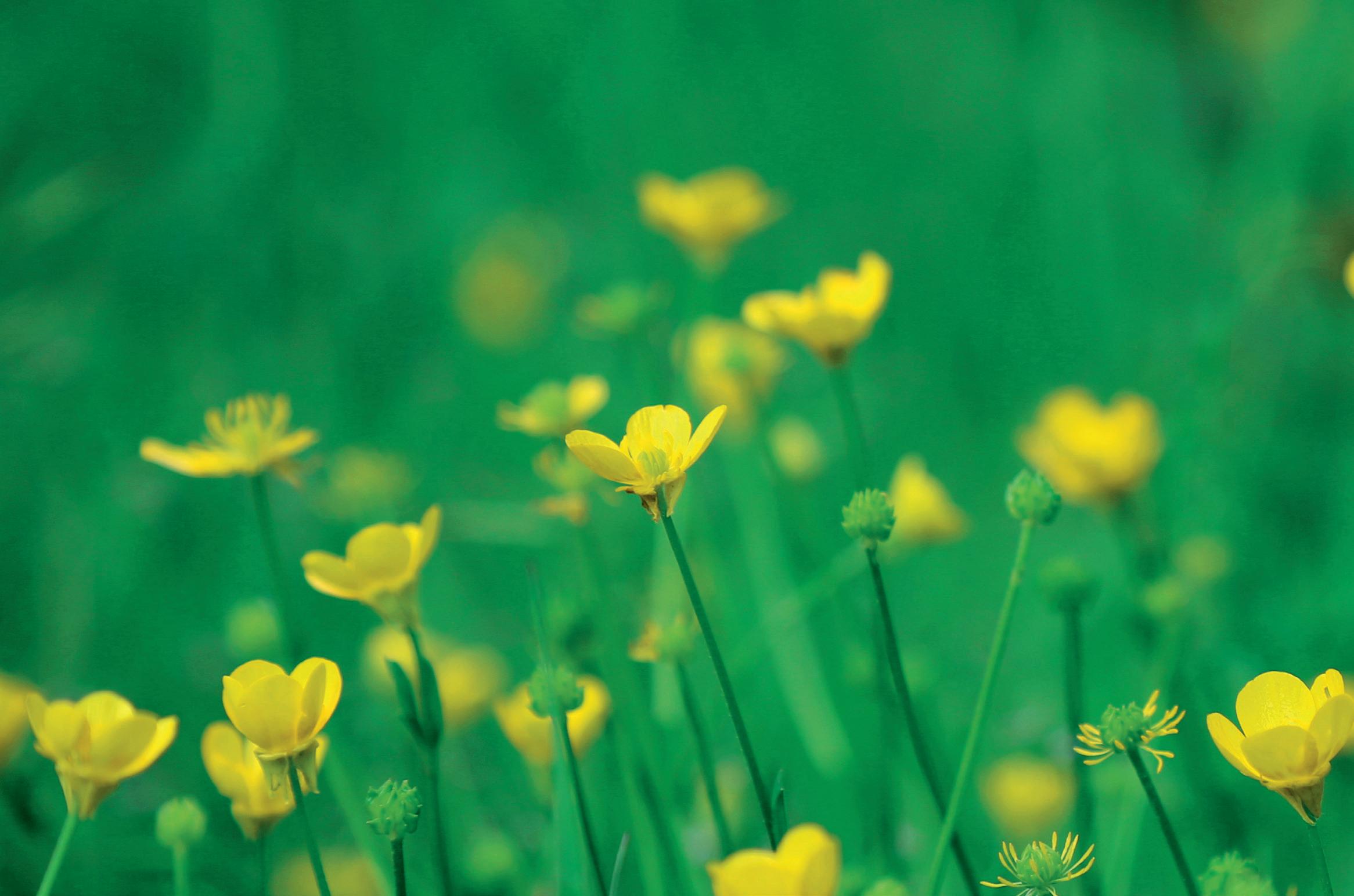









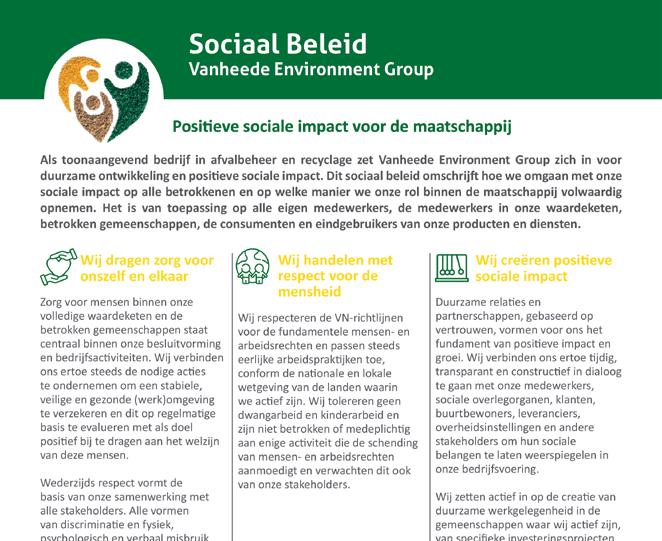



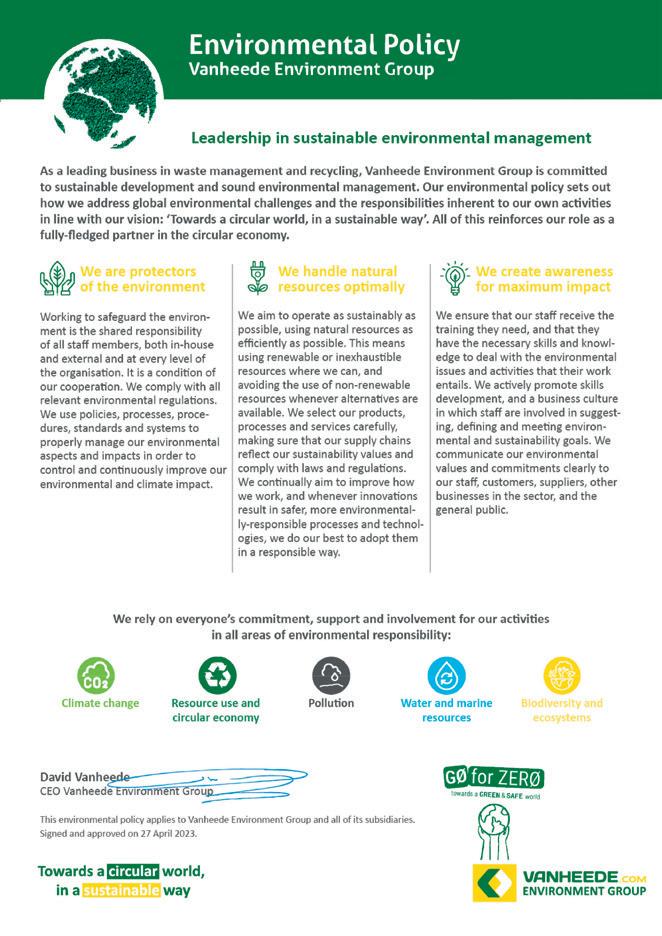





1. We protect the environment
2. We take care of ourselves and each other
3. We adhere to the principles of good governance
4. We want to protect our healthy financial situation
Out of all our goals, growth is key. Growth in its broad sense: we want to encourage sustainable economic growth. That being given, we take societal and environmental factors into account so we can meet the needs of today, while protecting the possibilities for future generations to be able to meet the needs of tomorrow. To promote sustainable economic growth, we follow the ESG (Environmental, Social, and corporate Governance) principles


As a leading waste management and recycling firm, Vanheede Environment Group is committed to fostering sustainable development and environmental management. Our environment policy describes our approach to global environmental challenges and the responsibilities linked to our own activities, as part of the “Towards a Circular World, in a Sustainable Way” vision. This strengthens our role as a full player in the circular economy.
Climate change
• By 2030, Vanheede aims to save three times more CO2 than it emits.
• We are committed to reducing our greenhouse gas emissions. We aim to be carbon-neutral by 2050.
• All our electricity must come from green and renewable sources. We will only use green electricity across our businesses.
• At least 50% of our company vehicles will be fully electric by the end of 2024
• Between 2024 and 2030, our goal is to get to 20% of electric trucks in our fleet and increase the share of HVO* biodiesel.
Materials use and the circular economy
• We put our own principles into practice. We try to recycle as much of our own waste as possible and thus reduce our residual waste as much as we can.
• Sustainable purchases, maintenance, repairs and reuse. We want to maximise the share of recycled materials in the purchases we make (containers, dumpsters, medical drums, bags, etc.). We are able to prolong the life of these assets through good maintenance and our own repair service.
• Our customers, a lever for maximum positive impact. We want to send the waste we collect from our customers to the best destination possible, by steering it towards recycling and thus reducing the proportion of residual waste to a strict minimum.
• By 2030, Vanheede aims to recycle 80% of collected waste.
*HVO is the abbreviation for "Hydrotreated Vegetable Oil". This is a type of advanced biofuel. The result is a fuel with similar properties to fossil diesel fuel but it emits fewer pollutants. HVO is often used as an alternative to diesel in vehicles, particularly those, like trucks, that were designed to run on diesel.

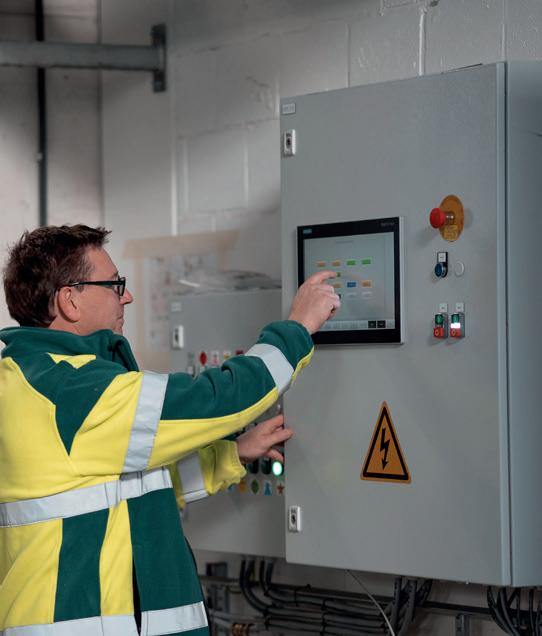


We want to promote trust and safe collaboration, both with our employees and with our customers, suppliers and the community.
Our employees
• Today the group employs nearly 1,000 people, spread across 20 sites in Belgium, Luxembourg and France. By 2030, we estimate the group will employ roughly 1,500 recycling heroes.
• Safe and healthy, pleasant and sustainable working conditions for our staff. We are aiming for an Employee Net Promoter Score (eNPS) above 30. We aspire to an accident-free workplace.
Employees in the value chain
• We respect human rights in our value chain.
• We try to work closely with the adapted companies in order to contribute to social inclusion and promote equal opportunities for all
Our influence over communities
• We try to raise awareness among our customers, our employees and future generations about the importance of sorting waste.


3. We adhere to the principles of good governance
We are committed to working in the most efficient way possible at all times, and to running the organisation according to the principles of good governance.
Governance structure
• Gender diversity is respected on the Board of Directors: the two sexes are represented on a ratio of one third-two thirds.
Innovation
• We want to plan for an annual investment budget of at least 8% of turnover.
• We want to develop a dynamic culture of continual collaboration, improvement and learning, that inspires every member of staff to explore new ideas and working methods and to embrace innovation as a fundamental value.
Customers and end users
• Loyal customers who are the ambassadors of our offer. We are aiming for a Net Promoter Score (NPS) above 30. We want to supply products that meet our customers’ quality standards

4. We want to protect our healthy financial situation
Our sector is highly investment intensive. A sound financial base enables us to invest in sustainable solutions and meet the ever stricter standards and regulations governing sustainability. Our profits are the oxygen that allows us to keep going.
Financial capacity
• We want to maintain a liquidity ratio of at least 1.

is tasked with taking over the burden on organisations to manage nonhazardous waste by creating added value. The Business Unit divides its activities into four pillars: supporting customers with their circular policy, Total Waste Care for Enterprises (providing support in “on-site” waste management), the best solutionand, therefore, the most sustainable - for customers’ waste and logistics services (transport, reclassifying and reconditioning).
is a Business Unit focussed on knowledge. It helps organisations manage special waste. By stressing risk management and quality, the Business Unit creates added value for collected waste. The aim is to carry out activities in a way that has the least negative impact possible on the environment by continually investing in digitalisation and automation. Special Waste Management’s activities are split between the following pillars: waste collection, waste treatment, projects and advice.
takes care of recovering specific products through innovating sorting plants. The Business Unit has two activities, each concentrating on a specific market: Material Recovery Facilities (MRF) and Plastic Recovery Facilities (PRF). MRF focus on recovering specific products from mixed residual waste from companies, and thus making sure that the waste complies with current regulations. PRF focus on recovering customer-specified products from plastic-rich raw materials. This is how new products can be manufactured and the maximum value can be obtained from the plastic.

runs the door-to-door collection of residual waste, glass, PMD, paper and cardboard.
mission is to clean contaminated plastics (mainly polyolefins). An ultramodern treatment plant
reduces the plastics, sorts them by polymer and colour, cleans them thoroughly and ensures they can be reused as a raw material. The added value of this mechanical recycling process is mainly created at the comprehensive upcycling plant and through colour-sorting; this is where we can produce high-quality raw materials, tailored to our customers’ needs, that can be reused in a circular economy.
concentrates on the best solutions for managing organic waste, by offering the best added value with the lowest environmental impact. Organics Recycling unpacks and treats food waste, turning it into soil additives and green energy, produces biomass and compost, upcycles mud on its own sites and others' and takes care of water treatment and management. As part of its activities, this Business Unit uses its expertise in production and

engineering, biological processes, agronomic processes, logistics processes and administration.
produces pellets that replace fossil raw materials in industrial manufacturing with alternative raw materials. In the AlterCoal production process, R&D, the latest technology and quality are essential. Pellets are tailor-made so that AlterCoal products always have the physical and chemical composition required by the relevant industry. As well as bio-waste, the pellets may also contain dry and complex synthetic waste that cannot be recycled mechanically. AlterCoal products are also used as part of chemical recycling to make circular raw materials.
Landfilling’s role is to deal with non-circular waste properly by using the best techniques available, in such a way that it will not have a negative effect on future generations. The Business Unit is divided into three main activities: mining (clay), filling (burying underground) and nature management. When extracting resources (topsoil, clay-loam and clay) and working a natural zone, landfilling also gives part of it back to nature and part of it to society.
aims to enable Vanheede to remain independent of the energy market by investing in producing renewable energy for all our sites. Electricity, heat and gas are generated from organic waste, wind and solar power thanks to energy recovery. Here Renewable Energies fills these three roles: establishing and strengthening our position on the energy market, development and production, and administrative monitoring and backup/advice for the Group as a whole. The cheapest energy is the energy we do not use. Renewable Energies offers guidance and support with the energy optimisation process.

The Group Support Services ensure the optimisation of essential services within each Business Unit so that they can be better coordinated and processed on a larger scale. Understanding the topics support services deal with is also becoming more specific and complex.

By innovating, we are tackling two major challenges:
Our goal is to have a positive impact in a circular world. The first is the ever-growing pressure on our climate and the environment. One of the main solutions to these global problems is to close the materials circle within the circular economy. As a business, we are in a prime position to help out with this.
We want to remain relevant in a sustainable way.
The second is that the world around us is changing at lightning speed, whether we are talking about technology, legislation, the customer experience or generations, etc. We have to prove we are flexible if we want to adapt.
Towards a circular world, in a sustainable way
Our vision makes up the basis for five innovation programmes. Two of them are directly linked to “Towards a circular world”, as well as our main activities: the collection, sorting, recycling and upcycling of waste, with a view to a circular economy. Under the principle “in a sustainable way”, three programmes ensure we remain a sustainable company, and for future generations too. To do that, we have to remain relevant in a rapidly-changing world, and also maximise our impact on the environment and the climate.
The goal of the circular economy is to separate economic growth from the production of materials using natural resources. We contribute to this by researching and adopting the best processing techniques for certain streams of specific materials, as well as exploring innovative methods for converting this waste into quality products.
The supply chain is a key factor to success, helping our businesses to prosper and thrive. To take our supply chain activities to the next level, we are counting on getting maximum efficiency out of our on-site operations, and on innovation in our reverse logistics models.
We innovate to perfect the transformation of Vanheede processes. Our goal is to turn them into high-performing, efficient processes in which digital technology plays a leading role. The design and architecture of this transformation is being built by focusing on the customer and employees, while constantly researching new technologies.
In order to ensure our future as an industrial leader and as a waste treatment and logistics company, we take into account the needs, projects and dreams of all stakeholders on our sites. Impact reduction and the importance attached to health and biodiversity are deeply rooted in our global goals.
Our goal is to apply a low-carbon economic vision. This realistic and well-thoughtout vision includes a climate-centric approach in order to create carbon-neutral energy systems. This is why we want to invest in climate-friendly solutions that can really make a difference.




















We contribute to developing a better world









MATERIALS ARE GIVEN A SECOND LIFE AT OUR SITES. THIS WAY WE HAVE A POSITIVE IMPACT ON THE CLIMATE AND OUR ENVIRONMENT, NOW AND IN THE FUTURE.

tonnes of CO2e emitted
GOAL: saving 3 times more CO2 than we emit ourselves by 2030
collected, sorted and treated waste
% recycling (|) and valorisation of collected materials
recycling and valorisation of collected materials
GOAL: 3 by 2030 M.
waste streams per collection address (Benchmark VALIPAC: 1,5)
How we contribute to the UN’s SDGs
Awareness of how to handle waste and materials with a minimum negative impact on the environment is of essential importance for the shift to a low carbon and circular economy.




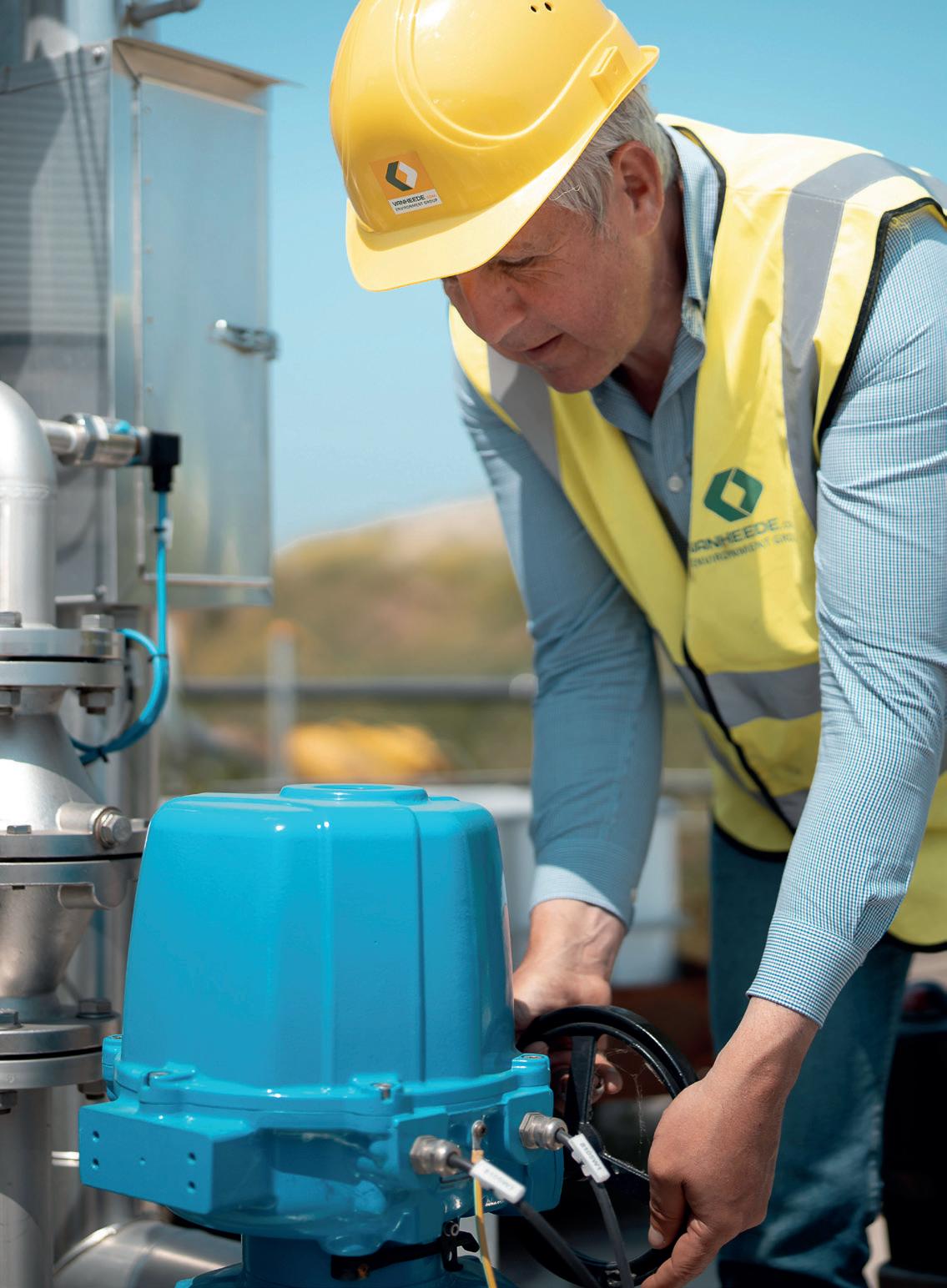
At Vanheede, we are committed to maximising our positive climate impact. Beyond our own operations, our ambition is to influence and inspire our value chain. The launch of the Carbon Smart Economy programme in 2019 was the first step in making that commitment a reality. The programme consists of four sub-programmes: Carbon modelling, Energy transition in processes, Energy transition in transport, and Renewable energy.
The Carbon modelling sub-programme is designed to provide insight into our own climate footprint and that of our sector. In collaboration with Greenfish part of Accenture, we are working to improve our climate impact mapping and to develop an ambitious action plan to reduce our corporate emissions.
Our aim is to extend the benefits of this work to our stakeholders and support them in their own carbon modelling and decarbonisation efforts.

















The greenhouse gas assessment for the 2021 baseline was established and updated in 2022. For the 2023 update, the focus was on making the assessment future-proof and actionable. Our automated calculation tool allowed us to streamline 2023 data intake and automate calculations, thus ensuring our readiness for evolving reporting standards. With emissions tracked across four levels – group, site, legal entity and Business Unit – our calculation methodology already provided insights on a detailed level, but increased data granularity elevates this further. The calculations better reflect the impact of green initiatives allowing us to closely track Vanheede’s climate progress.
These improvements help bridge the gap between theoretical emission figures and real-world action. Our goal is to leverage our own emission calculation results to support our up- and downstream partners in their decarbonisation efforts. We took a first step towards this goal by linking our corporate emissions to the 56 waste families we manage. This will enable us to inform our customers about the portion of emissions we generate during the treatment of their waste, thus promoting transparency in our operations and fostering accountability across our value chain.

Context 1 – What is taken into account in our greenhouse gas inventory?
A total of 19 emission categories are calculated and consolidated in 3 areas:
Scope 1: emissions from the combustion of gas and fuel that is burned in assets owned by Vanheede (both facilities and fossil fuel vehicles).
Scope 2: emissions from the generation of electricity that is procured and consumed by assets owned by Vanheede (both facilities and electric vehicles).
Scope 3: emissions generated by Vanheede’s tier-1 suppliers and clients.
Within Scope 3, investments in fixed assets were grouped separately under the distinct subcategory Scope 3b. The emissions from new buildings and installations are no less part of Scope 3, but the creation of a dedicated category allows to separate big fluctuations in investments from the – more consistent – greenhouse gas inventory.
SCOPE 1
SCOPE 3
SCOPE 2 STATIONARY GAS COMBUSTION MOBILE FUEL COMBUSTION FUGITIVE EMISSIONS
Context 2 – Inventory boundaries
FUEL COMBUSTION
PROCESS EMISSIONS
Geographically, the corporate inventory focuses on Vanheede’s activities in Belgium and France.
Operationally, 12 Vanheede sites were considered, as well as 12 legal entities and 9 Business Units.
Not only the anthropogenic emissions caused by human activity are in scope, also the natural biogenic emissions were calculated, albeit reported separately. The latter pertains to biogas from landfilling, bio-methanization and biofuel.
For more information about the scope of the exercise and all the emission sources considered, please revisit the 2022-2023 sustainability report.




In 2023, Vanheede recorded a total of 61.420 tonnes of CO2e in corporate inventory emissions. Nearly one third of emissions stem from the transportation of waste with Vanheede’s vehicles (Scope 1), while only 3% of emissions are attributed to purchased electricity (Scope 2). The bulk of Vanheede’s emissions are associated with activities within our value chain (Scope 3), particularly in the procurement of used goods and capital goods, as well as investments in fixed assets. The latter is reported separately in Scope 3b given the category’s high volatility over the years.
In comparison to previous years, there has been a marginal increase in our total corporate emissions inventory in absolute terms. In 2023, Vanheede's emissions were consistent with the levels recorded in 2022. However, there are two significant differences observed between the emission scopes:
• The Scope 1 fugitive emissions saw a significant decrease of 3,000 tCO2e in 2023. This reduction can be attributed to the biogas output from our bio-methanisation facility in Quévy. In 2023, a smaller portion of biogas was enriched to natural gas by means of our purification installation, resulting in less methane released into the atmosphere during the process.
• Scope 3b emissions more than doubled between 2022 and 2023 by nearly 5,000 tCO2e. This trend is in line with the doubling of our investments in new installations over the same period. Anticipating future investments, we expect further fluctuations in Scope 3b emissions. This underscores the rationale behind segregating investments in fixed assets from other Scope 3 categories.
Despite the increase of 100 tCO2e in absolute emissions, Vanheede’s reduction efforts are starting to have an impact. When we account for the growth of our business and adjust for the increased resource need, we see a relative decline in emissions. All ratios demonstrate a reduction in emissions compared to the 2021 baseline after the total Scope 1, 2, 3a emissions are normalized against the number of full-time equivalent employees, consolidated turnover, and tonnes of waste handled. Scope 3b is excluded from this exercise as the annual fluctuation in investments distorts the analysis.
Have the previous years’ calculations been updated?
Yes, the calculations from the previous years have been slightly refined to align with the new calculations for 2023.
Specifically, there have been retroactive additions of several products, such as office supplies and other small equipment, along with updates to recycling percentages for certain items.
The most significant adjustment involves the incorporation of an inflation factor to refine the calculations that are based on monetary expenditure. However, as we aim to minimise reliance on monetary inputs, the variance between the updated and original emission totals is negligible.
The revised annual footprint for previous years now amounts to 61,343 tonnes of CO2e for 2022 (previously 60,660 tCO2e) and 58,971 tonnes of CO2e for 2021 (previously 56,494 tCO2e).
Relative result of the corporate emissions inventory (Scope 1, 2, 3a)
We aim to utilise the most detailed activity data available for our emission calculations, guaranteeing that the real-life effects of our green initiatives are accurately reflected in our calculations. By doing so we make sure that decreasing carbon emissions is considered as a key factor in our decisionmaking processes. Our emission reduction efforts can be observed by the decreasing total of several emission categories.
The ongoing fleet electrification is lowering Scope 1 emissions from mobile fuel combustion. The fuel consumption has been steadily decreasing over the past two years, reaching a 4% emission reduction in 2023 compared to 2021. In parallel, Scope 2 emissions from mobile electricity consumption are rising due to increased electric vehicle charging. As we continue to electrify passenger cars, on-site logistic vehicles, and trucks in the future, this transition will become more visible in the next years.
Our reduction initiatives are also starting to show in Scope 3. We prioritise goods with higher recycled content whenever feasible. Notably, for plastic containers and waste bags, we progressively harness the reduction potential of recycled plastic. Throughout 2023, the recycled content of various singleuse items rose from 90% to 95%, resulting in a 25% decrease in production emissions for these products. As we explore alternatives to virgin material, this trend will increasingly manifest in our Scope 3 emissions.
With the impact of decarbonisation initiatives visible in the calculation outcomes, our carbon model underpins the emission reduction efforts of the three other sub-programmes: Energy transition in processes, Energy transition in transport, and Renewable energy. We are now advancing our Carbon Smart Economy journey by consolidating these individual efforts at a company level to define ambitious yet achievable targets for reducing our corporate greenhouse gas emissions. To this end, we organised a Carbon Smart Economy hackathon day during which we discussed reduction potentials and climate ambition. We aim to soon translate our collective ambition into concrete targets aligned with the Paris Agreement.
In our commitment to maximize our sector’s positive impact, we are focusing first on minimising our own negative climate impact. However, the waste sector enables the avoidance of emissions in many other sectors. Therefore, inspired by the 2023 Denuo climate study on the Belgian waste management sector, we have calculated the complete waste treatment emissions and avoided emissions for all 56 waste families we manage. Below, we present the model introduced last year to explain the methodology.
The Vanheede corporate inventory (in yellow) was used to allocate our operational emissions (for example from transportation) to each waste family. These Vanheede emissions are complemented by the emissions generated by our downstream partners who handle the remaining treatment steps (in violet). Thus, for every waste family and the corresponding treatment options, we created an overview of the Vanheede and downstream partners’ emissions

(left side scale). In addition, based on market averages, we estimated the avoided emissions for each waste family and treatment method (right side scale).
Combined, this model provides insight into Vanheede’s net climate impact. In line with the Denuo study, albeit more conservative, the general outcome is that for 1 tonne of CO2 generated by Vanheede and/or our downstream partners, 1.5 tonnes of CO2 is avoided elsewhere. With this as a starting point, we will push to continuously increase our positive impact to reach the dot on the horizon of three times more emissions avoided than emitted by 2030, as outlined in our Recycling Revolution initiative.
While Vanheede's absolute GHG footprint slightly increased in 2023, the results reveal a reduction in several emission sources due to our mitigation efforts. Utilising our automated calculation tool, we are well equipped to closely monitor our progress and enhance calculations to reflect ongoing reduction initiatives aligned with our climate goals.
Looking beyond our own corporate GHG inventory, we have taken a major step forward towards a complete understanding of our value chain’s climate impact by mapping the treatment emissions of our partners and the avoided emissions. Looking ahead, we are committed to sharing these insights with our stakeholders. Our aim is to provide customers with an accurate assessment of the emissions associated with their waste generation and empower them to act on their own carbon footprint. To achieve this, we have initiated a pilot project to translate emissions data from waste streams to customers, with the goal of delivering these insights to all Vanheede customers by 2025.
Through material and energy recovery, waste treatment companies avoid the disposal of waste without any valorization. The recuperated resources can be used as secondary resources in various other industries. They substitute primary resources such as coal or virgin steel, thereby avoiding emissions from extraction and manufacturing.
However, it is worth noting that estimating avoided emission is significantly less accurate than estimating actual emissions. Moreover, avoided emissions cannot be used to claim lower actual emissions.
The waste sector has an important role to play in keeping global warming below 2°C. However, achieving this will require closer collaboration among all stakeholders to accurately report emissions using partner data and to maximise the impact of reduction initiatives. We look forward to share our insights with the wider value chain and promote collaboration.
“Ensuring the sustainability of HGVs plays a key role in transitioning to emissionsfree mobility and eliminating pollution.”
| Peter Degraeve, Business Unit Manager Commercial & Industrial Waste Management

Between 2024 and 2030, our goal is to electrify 20% of our fleet of trucks and increase the share of HVO.















More ambitious CO2 emissions standards for new HGVs and the use of renewable energy sources for recharging batteries can significantly reduce transporters’ greenhouse gas emissions. This is vital if we want to meet Europe’s climate goals.
Vanheede is taking the initiative by investing in two fully electric trucks (a waste truck and a hook-loader). Right now, electrification seems particularly promising for collections when the route only covers a limited number of kilometres per day (the autonomy of electric trucks is still too limited for us to be able to roll out the use of this type of vehicle more widely). Although EVs are up to three times more expensive, Vanheede is working towards a more sustainable fleet with tests focussing on vehicle autonomy, how autonomy varies from season to season, the impact on the driver and the availability of chargepoints. Half of regional transport should be electrified by 2030, as long as an adequate recharge infrastructure is in place. This would meet the EU goal of having no more combustion engine vehicles coming onto the market by 2035.
Using HVO is also an option because its CO2 emissions are far lower (up to 90% lower) and it can be used widely (it suits almost all current vehicles), especially since prices are now starting to come down.
In addition, there are plans for eco-combi, a combination of an extra-long truck comprising a hook-loader and a trailer, that can transport a total of three containers at once. This type of transport is only currently authorised on specific routes with qualified drivers. The eco-combi could be a solution, especially for longs journeys on major highways.

By 2025, our fleet of vehicles will include no fewer than 141 electric vehicles while 91 chargepoints will be installed across our various sites, thus marking a significant step towards more environmentally-friendly mobility solutions. Right now, our fleet has 18 EVs and 43 plug-in hybrids.
In 2020, some 92% of our vehicles ran on diesel. In just three years we’ve brought this down to 67%. We intend to continue on this road by reducing the share of diesel vehicles to just 48% by the end of 2024.
This transition to an electric fleet fits right in with our commitment to become carbon neutral by 2050.














At least 50% of our company vehicles will be fully electric by the end of 2024

A small improvement in driving techniques can yield great advantages. That’s why all drivers have undergone eco-driving training which was recently expanded to include defensive driving. During individual practical sessions on a set route, drivers learn that economic and defensive driving in their own vehicle pays off. This is about handling difficult traffic situations better, reducing wear and tear, increasing safety, saving on fuel and making a positive contribution to the environment. Smart, on-board computers help them by providing information about their own driving style, combined with the type of truck and driving conditions. In Quévy, we have launched a pilot project through which, once a month, we will sit down with our drivers and study what we call the “driver performance score”.
“Thanks to our logistics department, we have rolled out a proactive approach to raise awareness about road safety among our drivers. Starting with a detailed report, we assess the eco-driving and fuel consumption of each driver with the help of a global indicator. Each driver then receives a personal eco-driving report so they can selfassess. The aim of this initiative is to make drivers more watchful of their driving habits and we plan to scale up its use in the future to further improve our road safety practices.”
| Xavier Verdonck, Logistics Manager
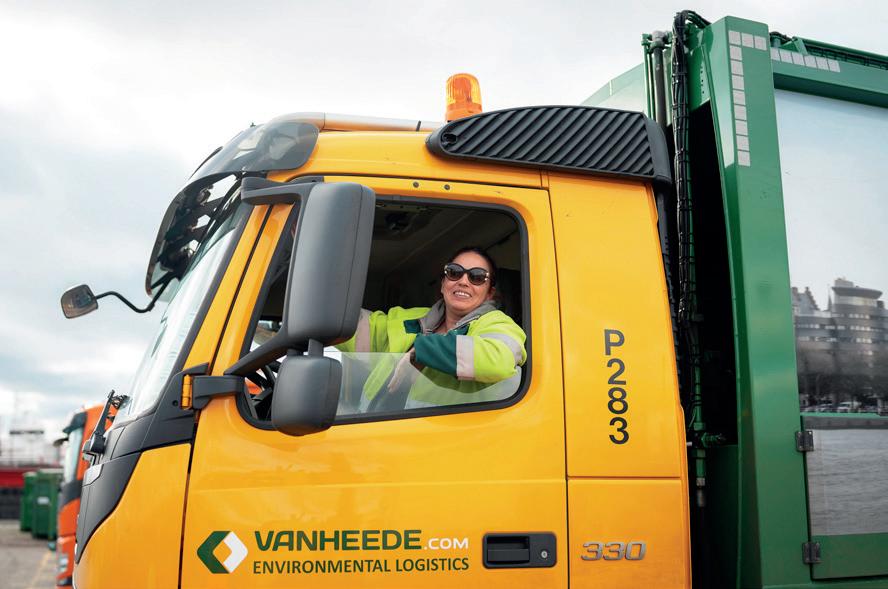
Evolution Eco-drive: 10% improvement over 4 years
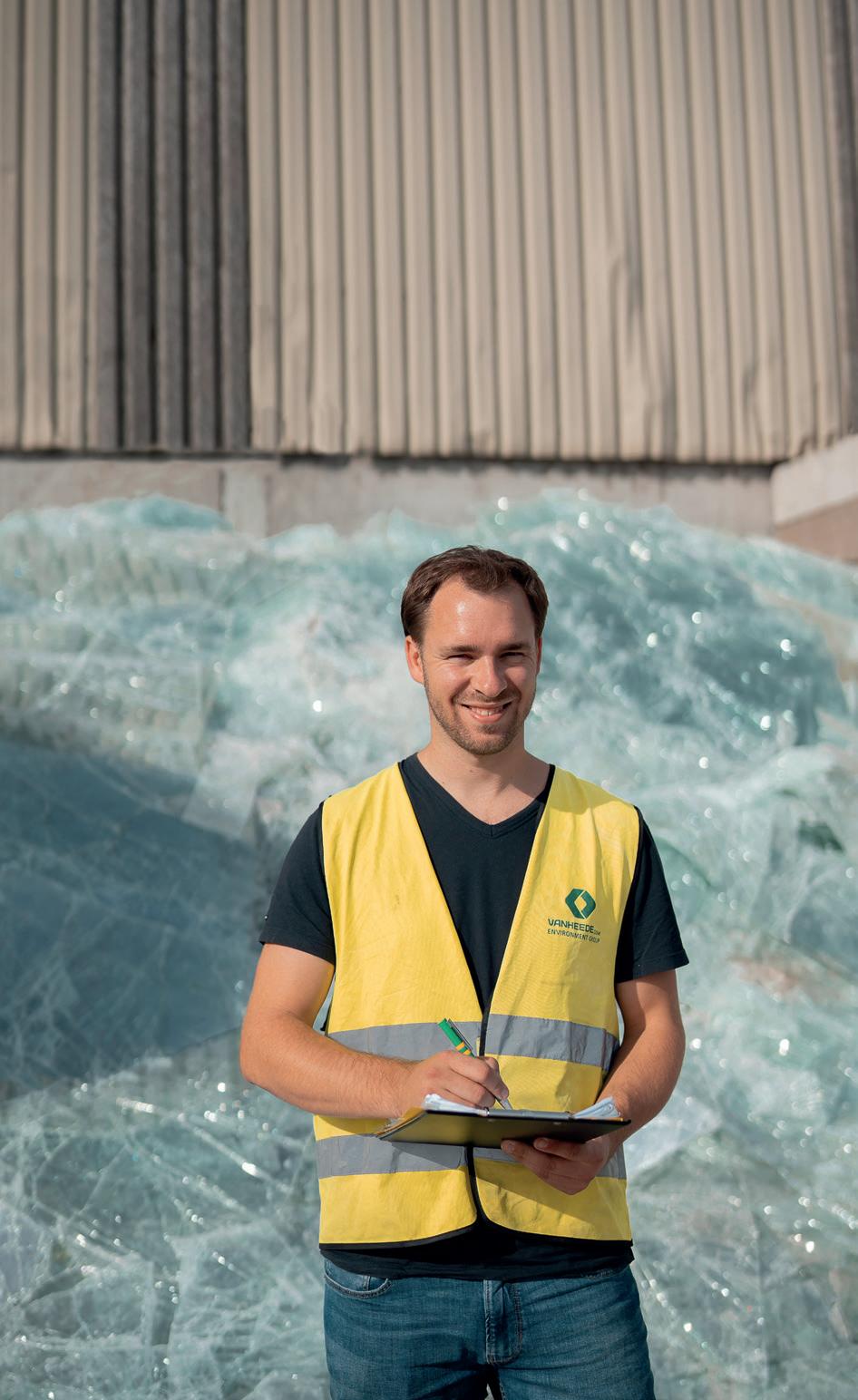

Vanheede is trying to change the way we treat waste and move towards a circular economy. By going above and beyond standard solutions and designing our own technology, we are investing fully in quality recycling, new primary materials and sustainable energy.
Vanheede declares a Recycling Revolution
We are all responsible for our planet and future generations, which is why we have to act. And the sooner the better. To make this happen, we offer unique and innovative solutions that make recycling easy and accessible for everyone.
Vanheede chose Global Recycling Day to launch its Recycling Revolution
This is a very ambitious project. With the Recycling Revolution, Vanheede aims to achieve the following by 2030:
We want to recycle 80% of collected waste
We want to bring the amount of recyclable materials in residual waste down to zero
We want to save three times more CO2 than we emit




























No-one can call for a revolution without a battle plan. And Vanheede Environment Group’s plan includes three unique, innovative and real solutions to deal with urgent challenges. The Plastic Switch, the Organic Switch and the Small Hazardous Waste Switch should make sorting at source easier and more accessible. It enables companies to comply with new regulations and ambitious goals for the selective collection of plastics, organic waste and special and hazardous waste. This benefits the companies and the world in general since the purer the waste streams, the greater the recycling rate, reducing the amount of waste going for incineration or landfill.


















“With the Recycling Revolution, we would like to see our customers, our staff and our suppliers help us meet our ambitious recycling goals. We invite you to think about it. 2030 is just around the corner. The time to act is right here, right now!”
| Kim Delvoye, Marketing & Communication Manager
We set a good example by treating our own waste streams knowledgeably and by sorting them in an optimal way.
3,132 tonnes of waste of which 86% is recycled

• 2,022 tonnes of non-hazardous waste
The final destination of non-hazardous waste from our own activities in absolute value and as a percentage:
• 1,109 tonnes of hazardous waste
The final destination of hazardous waste from our own activities in absolute value and as a percentage:
*Currently, a number of material streams, including pallets and various containers, are already reused, but we do not yet have a way of measuring this reuse.
As a waste collector, we have a duty to set an example to our 20,000 customers and minimise the volume of our own waste.
To measure is to know. So the very first thing to do is to properly record the quantity of waste and then targeted action can be rolled out. That’s why we set up an “Own Waste” working group. This group carries out field visits in order to assess what measures should be taken to reduce our residual waste as much as possible. We group these actions per waste source so as to better control their effectiveness by connecting data collected (quantities of waste for example) to specific indicators: the number of employees (in offices for example) or the number of trucks (in garages for example).
In addition, we actively encourage sorting at source. We begin by optimising the use and maintenance of the assets we acquire. When the need arises, we try to repair the assets. If that’s not possible then they are recycled. By sorting properly we are able to recycle as much as possible and minimise our residual waste.

To facilitate the selective collection of waste streams, we provide numerous containers and receptacles. In all, these represent more than 9,000 tonnes of CO2 in the “purchased goods and services” category. This is a field in which we also need to make environmental gains if we want to reduce our carbon footprint.
We suggest the most suitable container and buy it when demand and our business growth requires. We try to use European suppliers when we can. In any event, circularity is a fundamental condition of cooperation.

“Each conversation with a potential supplier starts with the same question: is there a circular approach? If the answer is yes, then we continue with the conversation.”
|
Danny Acke, Purchasing & Procurement Manager
Our containers are composed of as much recyclate as possible. For green containers, that now means 70 to 80% of recycled materials. Thanks to our new machine park, the yellow colour of our bins, which is currently made out of 100% virgin raw materials, could be obtained using regenerate.
In accordance with Vlarema 7, bin bags must contain 80% of recyclate, half of which must be post-consumption. In 2025, this figure will be 100%. All our LDPE bags already comply with Vlarema-7-2025 legislation. This conformity is also certified with each production delivery.
Our press bags, which have to be transparent (i. e. virgin) in order to be acceptable, will, in the future, contain 30% of regenerate without losing their transparency. A PP bag has also been developed recently for collecting PP packaging to facilitate treatment.
“The higher the percentage of recyclates in bags and containers, the lower the production of emissions relating to goods and services purchased/equipment. The difference in emissions can reach a factor of 10 depending on the material and its composition. For example, HDPE has an emission factor of 1,920 kg of CO2e/tonne for virgin material compared to 202 kg of CO2e/tonne for recycled material.”
| Bernard Huyghe, Greenfish part of Accenture

At end-of-life, we carry out minor repairs ourselves and we take apart the containers so they can be recycled as much as possible. Wheels are removed and rubber, metal and plastic are sorted. The plastic is ground into pellets at our plant in Dottignies and sent back to our manufacturers as raw material. So scrap material is turned into new containers to reduce the use of virgin raw material.
A good example is our medical bins (MedyBins) which are entirely circular. Working with our Dutch supplier, they are made out of 100% Vanheede recyclate. We have also begun collaborating with a French manufacturer of medical bins to develop bins containing as high a percentage of recyclate as possible (within the limits of what is currently, technically possible). Our Dutch partner is now reaching out to other European countries in order to expand the market for 100% regenerate medical containers (our MedyBin).

For the structural work of our new, energy-efficient logistics centre and office complex, we are working with Valcke Prefab Beton, a firm specialising in agroindustrial construction. The cement supplier for concrete pre-fab elements is Heidelberg Materials, which also buys the high calorific value pellets that we produce. Heidelberg Materials, one of the biggest construction materials manufacturer in the world, has made a deliberate choice to use alternative fuel in its production process in order to reduce its fossil fuel consumption.
Vanheede Alternative Fuels produces AlterCoal pellets at its innovative plant at Dottignies. AlterCoal is an alternative fuel made from high calorific value waste which cannot be recycled. Energy-intensive industries, such as the cement industry, are hungry for alternative fuels to replace fossil fuels and improve sustainability. During cement production, the pellets are also 100% recycled: 80% of pellets are used as a source of energy and the ashes - or 20% of the volume - are added to the composition of the cement as a raw material. Only a few techniques offer this guarantee that materials will be recycled 100%.
For the construction of our new site in the Haven Zuid Roeselare industrial park, we are also using materials recovered from demolition works at our Rumbeke site where we are currently building a new sorting centre. More than 12,500 tonnes of material, including mixed rubble, concrete rubble and soil, will thus be repurposed.
“Creating sustainable industrial parks focused on the circular use of materials is only possible by working with partners who are also strongly committed to going down this path. Thanks to Heidelberg Materials and Valcke Prefab Beton, we have been able to complete the loop.”
| David Vanheede, CEO

Safety footwear is essential in ensuring the safety of our employees. But these shoes and boots also contain a mine of material that is worth recycling once the footwear is worn out. What’s more, quite a lot of the material in this safety footwear is non-biodegradable, which underlines the need to turn to sustainable methods, such as recycling and reuse, in order to reduce the impact on the environment.
That’s why a circular safety footwear pilot project has been launched at Geluwe. When a new pair of shoes is bought, the old pair is collected, shredded by a third party and separated into ferrous metals, non-ferrous metals, textile and fluff, rubber and PU, leather and foam. All the materials are reduced to very fine particles (granules) and converted into secondary raw materials to be used in new products such as insulation or tiles for sports grounds.
We also collect our safety clothes and uniforms when they have reached the end of their useful life. These are treated at our Dottignies site. Instead of treating them as high calorific value waste as we used to, we have recently set up a process that enables us to transform work shoes and clothing and antidust masks into new materials.
In an effort to remove all confusion as to the right place to dispose of our waste, a promising pilot initiative has been launched at our Quévy site: the smart sorting bin.
This is the outcome of a collaboration between Vanheede and the Walloon startup Neurogreen. This revolutionary bin tests our sorting knowledge and corrects errors automatically through video and audio feedback in real time. This innovative approach means an end to the wastage caused by PMD bins being recategorised as routine industrial waste and thus contributes to efficient and sustainable waste management.
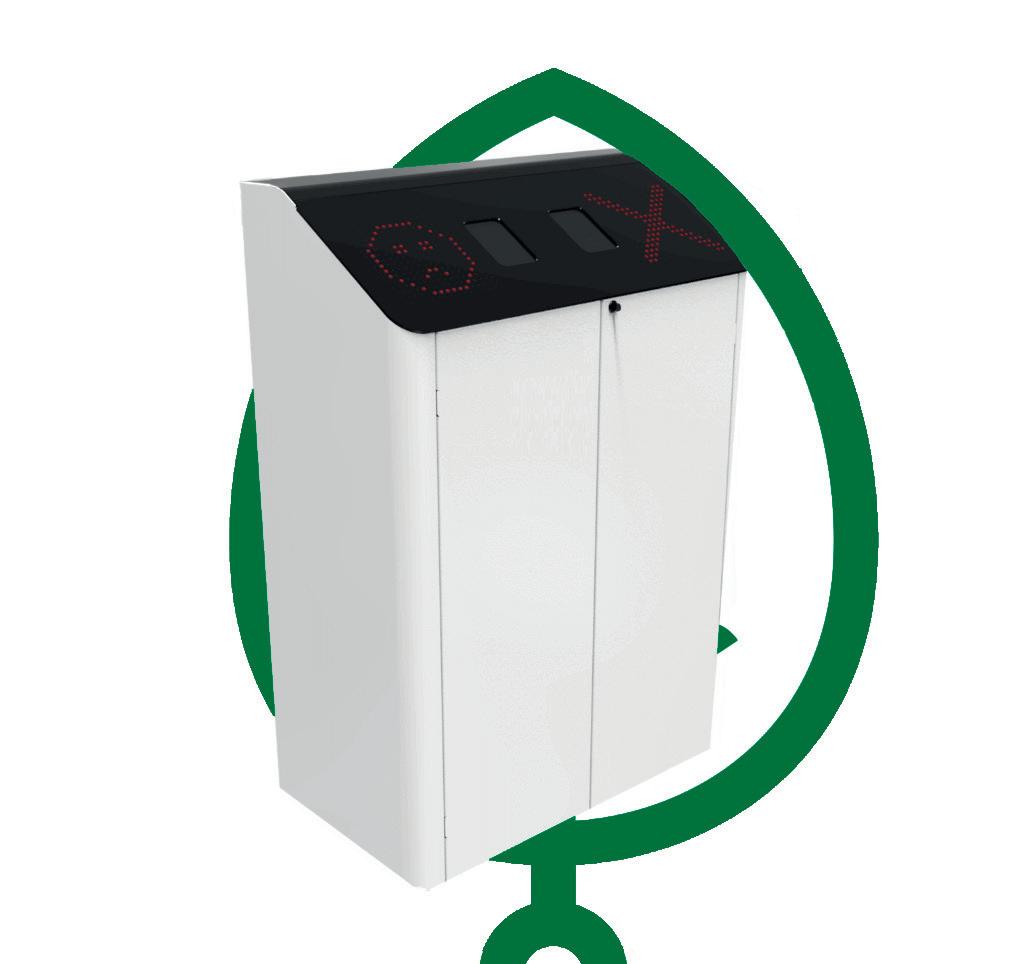

"Currently being trialled in our offices, this solution could be offered to our customers, mainly large local authorities with canteens, so that they too can learn to sort waste in a fun way!"

|
Gilles Godissart, Commercial Manager Wallonie C&I
Vanheede invests in permanence so that we can offer a proactive solution to challenges such as the importance of sorting at source, preventing residual waste and developing new recycling techniques.
The “waste hierarchy” drawn up by the World Business Council for Sustainable Development serves as a guiding principle for optimising our business activities, as well as those of our customers, and meeting sustainable development goals. By encouraging prevention and the reuse of waste, companies can make savings while contributing to a sustainable society. Respecting this concept also helps create a positive image and earns you more trust from customers and stakeholders.
Prevention: avoiding producing waste in the first place by, for example, looking at the design of a product, recycling and the reuse of materials
Reusing materials and products
Recycling materials and products
Co-processing: the co-incineration of waste which enables the recovery of raw materials and energy Energy recovery: incinerating waste with energy recovery
Note that co-processing now plays its role in this hierarchy ladder, since Vanheede transforms fractions of residual waste such as non-recyclable textile and plastics, into environmentally-friendly fuel and primary materials for sectors such as the cement, lime and steel industries. Using these alternatives to coal renders this waste 100% useful. So, on the one hand you have energy recovery through the heat generated during incineration and, on the other, the ashes created by incineration are used as a primary material in the cement, lime and steel industries. Only a few techniques offer this guarantee that materials will be recycled 100%.
764,657 tonnes of collected waste of which 61.05% recycled
• 732,831 tonnes of non-hazardous waste
The final destination of non-hazardous waste from our clients in absolute value and as a percentage:
• 31,826 tonnes of hazardous waste
The
and as a
*Currently, a number of material streams, including pallets and various containers, are already reused, but we do not yet have a way of measuring this reuse.
















1.8 waste streams collected per address
Vanheede raises awareness of the importance of efficient and ecological waste management among specific customer segments by emphasising sorting at source. We thus obtain higher quality primary materials. We help our customers achieve their sustainable development goals in terms of materials management.
Thanks to Valipac, our waste management is more transparent than ever, which is key to better understanding our practices and improving them. A powerful indicator of our success is the number of types of waste collected per address. Obtaining even a slightly better result with this would demonstrate an improvement in sorting behaviour, thus highlighting the positive impact of our efforts to increase awareness among our customers.

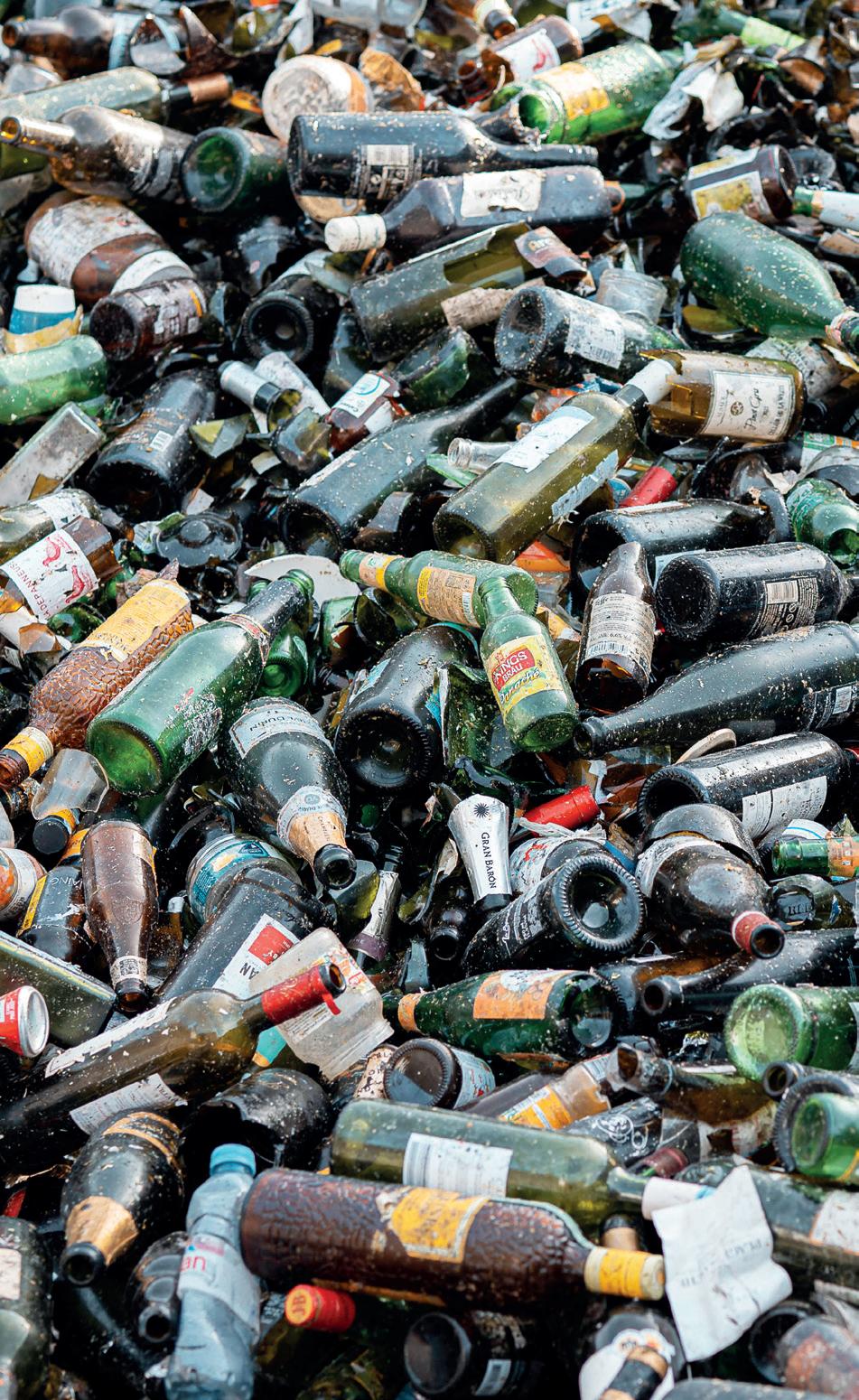
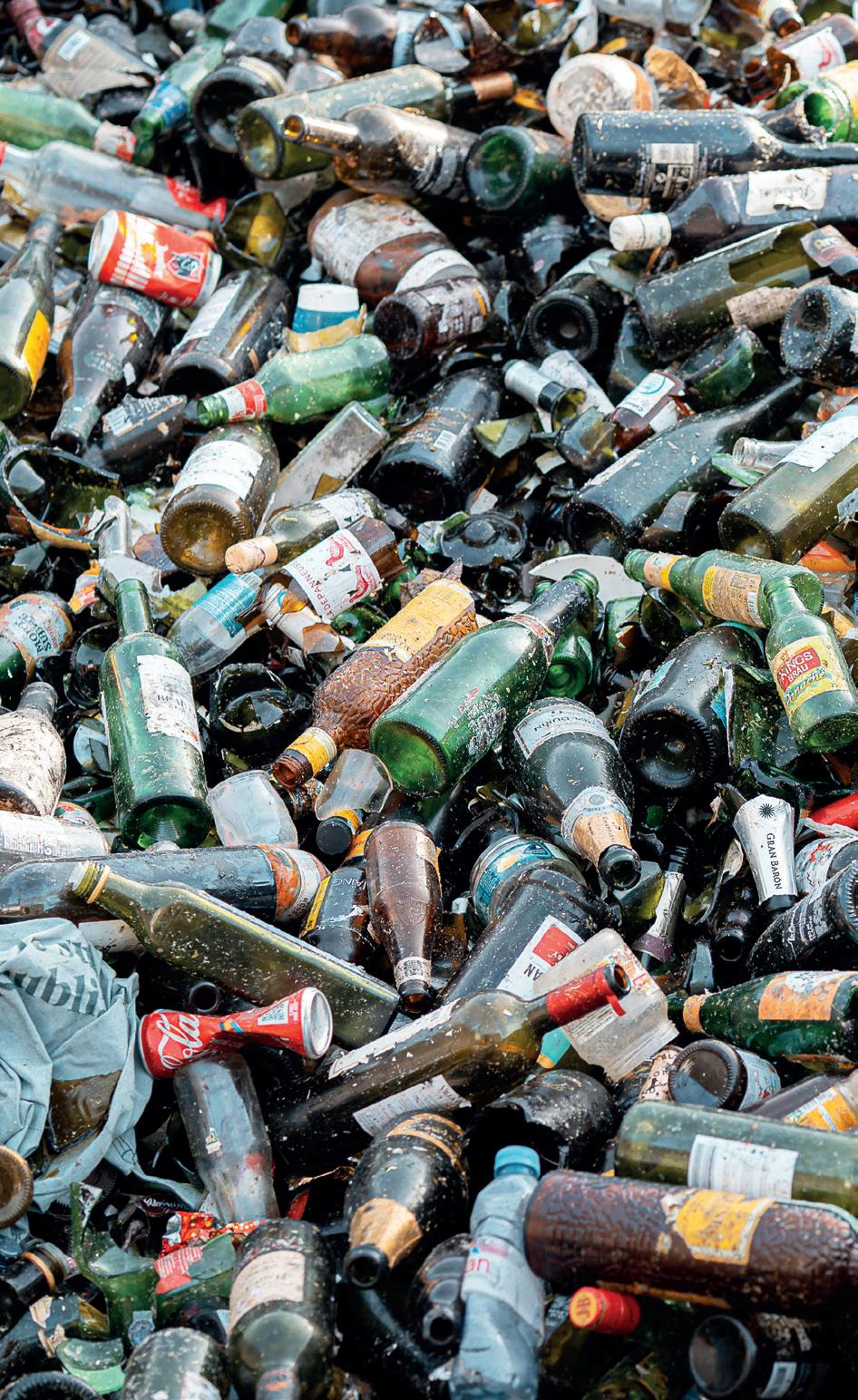

Collecting, sorting and processing waste are our main activities. We try to organise this in as sustainable a way as possible in order to limit our own consumption and our own impact on the environment.

Protecting marine resources is at the heart of our activity, because by recycling and treating more waste we reduce its potential to contaminate water and nature in general. As water becomes ever rarer, it is crucial that we reduce our consumption and improve our management of this resource.
To achieve this goal, we are rolling out several concrete measures such as reusing rainwater to do things like reducing the dust in the air, washing our trucks and flushing our toilets, rather than using mains water. To this end, we have created retention ponds at our various sites, ensuring we have all the rainwater we need even during droughts. This contributes to a more responsible and sustainable use of this precious resource.
In 2023, we launched an additional initiative by building a retaining wall all around our landfill in Rumbeke. The purpose of this wall is to prevent extreme drops in the level of the water table around the landfill, thus reducing the risk of soil compaction. We are now studying the possibility of pre-treating leachate: contaminated water generated from water percolating through the landfill. This water is currently stored in retention pools until it can be taken to specialist water treatment plants.
Lastly, we are currently preparing a “water policy”. Once drawn up, this policy will enable us to roll out concrete measures with a clear vision and further spread the word on efficient water management among our colleagues.
In 2023, the consumption of mains, or tap, water increased by about 10% because the water treatment plant was temporarily out of service, resulting in a lack of treated water for production.

We are mindful of the quality of life of our neighbours, so we try to limit nuisances by taking into consideration their wishes and complaints. For several years, odours around the Rumbeke landfill have been monitored. We also keep neighbours informed and consult them to keep communications channels open. Regarding new permits, consultations with neighbours have been organised at Quévy, and will also take place at Haven Zuid Roeselare at some point.
We take noise pollution into consideration too. At Quévy and Dottignies, we are conducting additional sound level tests so that we can be proactive should a problem arise. In any event, noise is a criteria when buying new plants and positioning new buildings. Soundwalls also provide an additional buffer against nuisances.
We are designing our new sites, such as the logistics centre (Smart Special Waste Logistic Centre) at Haven Zuid Roeselare, to have as low an impact as possible. Preventing air and water pollution is one of the priorities of this goal. Air pollution is averted thanks to extraction fans in each room; the air is evacuated via an active carbon filter. The air at the point of evacuation is constantly checked, so monitoring is permanent. Controls at source will also be used as much as possible when storing streams susceptible to odours and dust indoors.
Water pollution is avoided by carrying out activities indoors or under cover and by working with a separate sewer system. Domestic waste water and non-polluted industrial waste water (each with a separate route) flow straight into the Aquafin collector and are sent on to the water treatment plant. Waste water from cleaning activities and laboratories are collected in tanks and transported for treatment.


As part of our work with Stad Roeselare planting additional trees in the area around Bergmolenbos, we held a tree-planting drive in February. In all, 4,000 oaks were planted! This action formed part of the Stad Roeselare climate plan which aims to plant 100,000 more trees by 2025.










4,000 oaks have been planted in Bergmolenbos























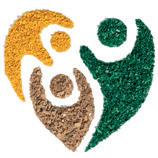
People





We are a family business












HEALTH, SAFETY AND WELFARE, BUT ALSO STABILITY, DIVERSITY AND INCLUSION ARE OUR TOP PRIORITIES. WE RECOGNISE TALENT AND WE OFFER IT ALL THE LATITUDE IT NEEDS TO FULFIL ITS POTENTIAL, IN COMPLETE TRUST. MUTUAL RESPECT IS AT THE VERY FOUNDATION OF OUR COOPERATION.


Providing meaningful work with an eye to the future, a commitment to training and development, and a guarantee of health and safety keep our employees involved and motivated.



Innovation and digitalisation are the key pillars of the Vanheede Group. In January, we launched a platform bringing together all our training processes: from registering to getting your report, everything is now handled in an integrated and efficient way.
This initiative marks the start of a long-term project that aims to offer hybrid apprenticeships in which physical and digital training is combined and tailored to the various posts. The goal is to have this project up and running by 2026 and to integrate it into a comprehensive Learning Management System.
Over the next two years, the focus will be on research and using software to convert existing training programmes into e-learning.
Vanheede wants to do all that is within its power to prevent dangerous situations in the workplace and is fully invested in its role of example-setter, shared vigilance, cleanliness and tidiness and personal protection. Safety requires the cooperation and vigilance of every employee; it’s the only way to achieve our “zero mission”. Thanks to this project for changing behaviours, safety has become a topic discussed at all levels.
At a Group level, we managed better results in 2023 than in 2022, and we have pretty much got back to the 2021 level.














Sector benchmark 2022 (Nace2 - code 38) = 0.83
Frequency rate (Fr)
Sector benchmark 2022 (Nace2 - code 38) = 24.89
Deaths due to work-related injuries and work-related health problems for 2021, 2022 & 2023 is 0. The treshold for 2024 is 0.
The sector benchmark 2022 (Nace2 - code 38) is 1.
In 2023, we unfortunately registered 53 work accidents. That’s 53 too many!
To give us an idea of our results in terms of safety, we use two important yardsticks: severity and frequency rates.
Frequency rates measure the number of work accidents with absence, expressed through the ratio of the total number of work accidents occurring in the workplace leading to at least one day off apart from the day of the accident, over the total number of hours worked, multiplied by 1 million.
The severity rate measures the human damage caused by work accidents. The severity rate is the ratio of the number of calendar days effectively lost because of accidents occurring in the workplace over the total number of hours worked, multiplied by 1,000.
Although our progress is promising, we have not yet managed to get below the thresholds that we have set ourselves.
The road to the “zero accidents per year” goal is still a long one but we will work on this together.
An analysis of the causes of work accidents has shown that cleanliness and tidiness are still regularly identified as the primary culprits. So the changing behaviour project, and in particular the theme of cleanliness and tidiness, will remain the mainstay of our annual action plan in 2024. Among other common causes, we could mention getting into and out of trucks, opening and closing dumpsters, slipping or tripping and using hand tools.


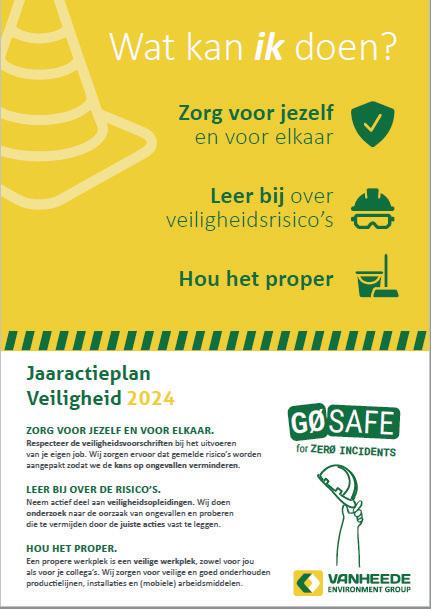
Other actions in the programme include:



• Monitoring investments and the meticulous onlining of new machines/ production lines
• Improving the recording of narrowly-avoided accidents (dangerous actions/ dangerous situations) to prevent the situation getting worse
• Continuing to develop the HSE software, enabling accidents and incidents to be recorded and examined and to ensure more structured monitoring
• Strengthening the HSE team by adding new colleagues, working with external prevention and protection services and insurers
• Drawing up evacuation plans and continuing to develop emergency plans
• Drawing up a well-being policy
• Creating an inventory of chemical agents
• Creating job sheets
• Etc.
Last April, Vanheede organised "Safety Days" at 10 of its sites in order to reduce the number of work accidents. These safety events, created together with work accident insurer Liantis and DrivOlution, enabled all colleagues to meet the challenges faced by drivers such as coping with blind spots, reaction times and techniques for getting into and out of trucks safely.
Various themed stands were set up to raise awareness among participants, including a course with glasses that simulate being under the influence of alcohol or tired, and playing videos illustrating situations that almost ended in accidents that actually occurred on our sites, etc. Special attention was also paid to correctly sorting our own waste.
During the Safety Days, each colleague had a chance to fill out a form assessing their well-being at work. We are extremely mindful of the mental health and well-being of all our colleagues as we consider them vital to the smooth running of the Vanheede Group's activities. Once the results are analysed, an action plan will be drawn up emphasising any areas requiring particular attention.
So organising these Safety Days was an excellent way of increasing involvement in, and awareness of, safety within our company and reducing the risk of workplace accidents!




Since January 1, our employees have been able to use a new system for logging their work hours, giving them greater flexibility. Each member of staff is now able to, in part, define their own work hours. This ensures a better work-life balance. This initiative is included in the new Employment Deal.

Since 2021 Caroline Vanheede has been working as one of the gender equality ambassadors in Belgium’s waste management and recycling sector, serving as President of the Women in Recycling project set up by Denuo.
“Committee for a Pleasant Working Environment”
Being a sustainable company also means having a workplace were employees feel appreciated and supported.
With the support of the management board and the Committee for a Pleasant Working Environment, we have instituted various initiatives to create a positive and stimulating working environment. For example, we celebrate the anniversaries or retirement of employees, we organise group purchases of bikes to encourage soft mobility, we challenge employees to ascend Mont Ventoux and we offer cheap tickets for festivals and sports activities, etc.
The proportion of women in our workforce, all posts included, reached a new record in 2023. Although this growth remains modest, it is still praiseworthy, especially in a sector that is traditionally considered male-dominated. A positive dynamic is noticeable among workers, while among drivers and office staff we see a slight reduction in the number of women. These results prompt us to keep up our efforts to encourage gender diversity within the Vanheede Group.
The Committee for a Pleasant Working Environment

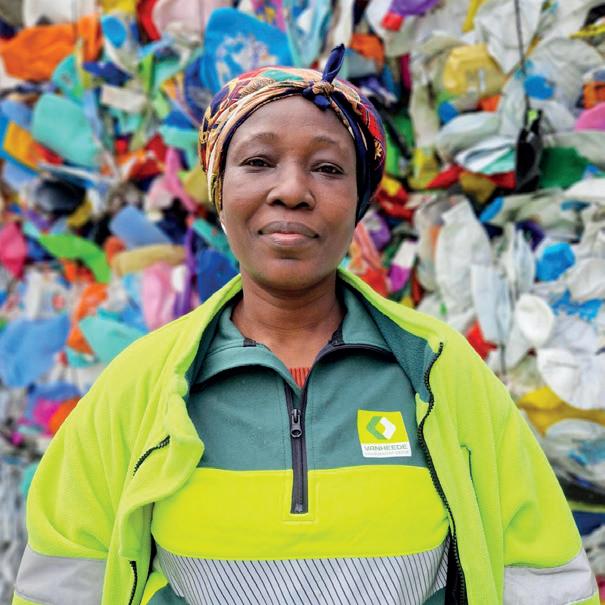
In 2023, Vanheede incorporated the Denuo work group into the Business Uniting Talents (BUT) 2030 project, launched by the Prince Philippe Foundation with the backing of the King Baudouin Foundation and CSR Europe. This ambitious project aims to encourage ethnic diversity and inclusion in the workplace, particularly through encouraging the hiring of non-European citizens.
This collaboration has given Vanheede the chance to submit its practices to rigorous evaluation through the Multicultural Diversity and Inclusion Assessment developed by CSR Europe. This tool serves as a benchmark for assessing the level of maturity of companies in these fields. Although Vanheede enjoys a great deal of diversity among its colleagues in terms of origins, genders, age, language and other criteria, the analysis nevertheless revealed that the company still has a below-average score compared to the 14 companies assessed at the same time.
So Vanheede intends to step up its efforts and implement the recommendations provided to achieve a greater level of maturity in terms of multicultural diversity and inclusion.
Since the beginning of 2023, Vanheede has complied with the new legal obligation to protect whistleblowers by setting up an official reporting channel. This measure is designed to enable whistleblowers to report violations of EU rights in the workplace in a completely confidential way, without fear of any reprisals.
To meet this legislative requirement, our human resources department has instigated a dedicated procedure by setting up a reporting channel that can be accessed directly via our website. Whistleblowers are able to fill out an online form, thus guaranteeing an absolutely confidential process. This measure encourages transparency and creates an environment in which employees feel safe in reporting misconduct.
Vanheede’s commitment to the social economy includes incorporating the skills of people outside the jobs market through the Westlandia (Ypres), Manus (Antwerp), Bewel (Genk), Mariasteen (Hooglede) and Interinser (France) organisations. Through this collaboration we benefit from unique skills and experiences, strengthening our ability to offer original solutions, while contributing to the personal and professional growth of these workers by integrating them into an inclusive and respectful work environment.

Maintaining open and transparent communication channels with neighbours is still an absolute priority. That is why at our Quévy site we have set up a Support Committee of Vanheede representatives and neighbours, meeting twice a year. The aim is to ensure locals are kept up to date with current activity and possible nuisances, and also to hear any complaints they may have and to look for solutions. In recent years, the number of neighbours taking part in these meetings has dropped, which is indicative of our commitment to conduct our business in a way that respects the surrounding area and in the effectiveness of our proactive communication. In exceptional circumstances, we also hold public information meetings to present major projects - such as expanding the site - to neighbours.
In Rumbeke, we maintain regular communication with neighbours by keeping them informed of all current and future activities on the site through our newsletter, "Infoblad Rumbeke", which is pushed through some two hundred letter boxes in the neighbourhood. In addition, we have provided them with a phone number they can call to alert us to any anomalies.
As a sustainable company, we aspire to have a positive impact beyond our value chain and support various organisations and initiatives who share our fundamental values every year.
• We are happy to have been able to donate laptop computers and mobile phones to Allemaal Digitaal Kortrijk and thus contribute their noble cause. We believe in the importance of supporting projects which improve access to technology for all.
donation of:
· 20 screens
· 17 laptops
· 1 desktop computer
· 60 mobile phones


• In August 2023, Justine Vanheede took up position on a sulky in the 4Brain Horse Race during the Waregem Koerse. The entire winnings were donated to a youth support centre, Ten Dries in Zwevegem.

After the success of our first collaboration in 2023, Vanheede has established a long-term partnership for the next three years in order to offer maximum support to Special Olympics Belgium in managing their waste. This year, the National Games, bringing together 3,400 athletes with mental disabilities in 20 sporting disciplines, were held in La Louvière.
“This renewed and long-term partnership with a specialist in waste management means the environmental footprint of the National Games will be lower in the coming years. So we are delighted to work with Vanheede to make the National Games more environmentallyfriendly and make them a role model for other Special Olympics events.”
| Dominique Dehaene, National Director Special Olympics Belgium
Valipac plays a key role in auditing recyclers outside of Europe, with a new declaration system to ensure that the packaging waste we collect is then recycled in conditions that meet European Union health, safety and environment standards.








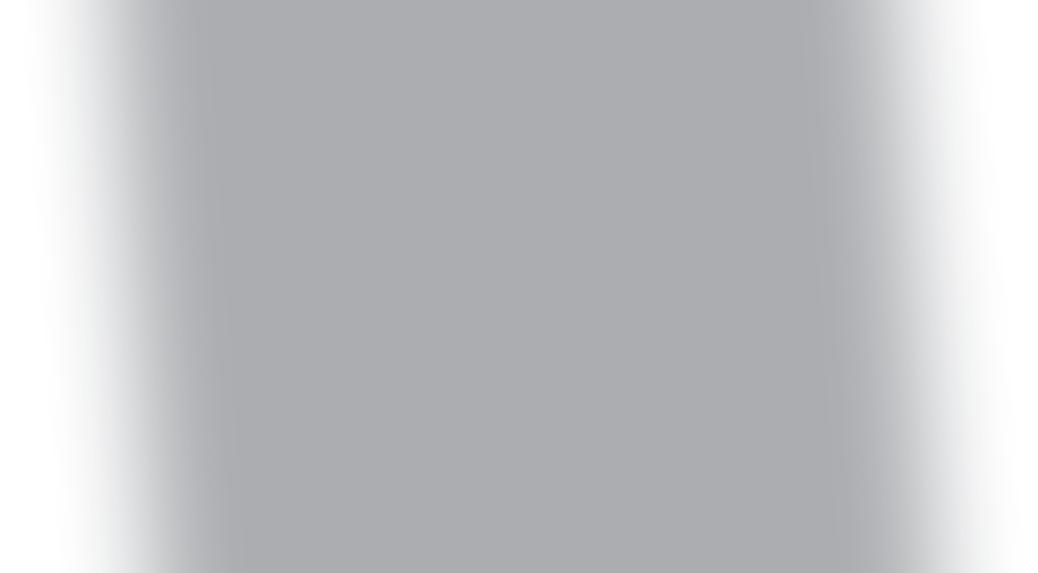






















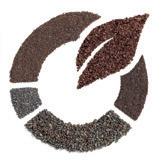



We are developing a sustainable future









EVERY ONE OF US MAKES A DIFFERENCE, FOR THE STAKEHOLDER, THE COMPANY AND FOR THEMSELF. PROFIT IS THE OXYGEN THAT ALLOWS US TO INVEST, INNOVATE AND ORGANISE IN A SMART WAY.

How we contribute to the UN’s SDGs
Our long-term vision is aimed at business continuity. Profitability and a healthy financial policy constitute the oxygen for entrepreneurship that enables us to maintain our focus on sustainable partnerships


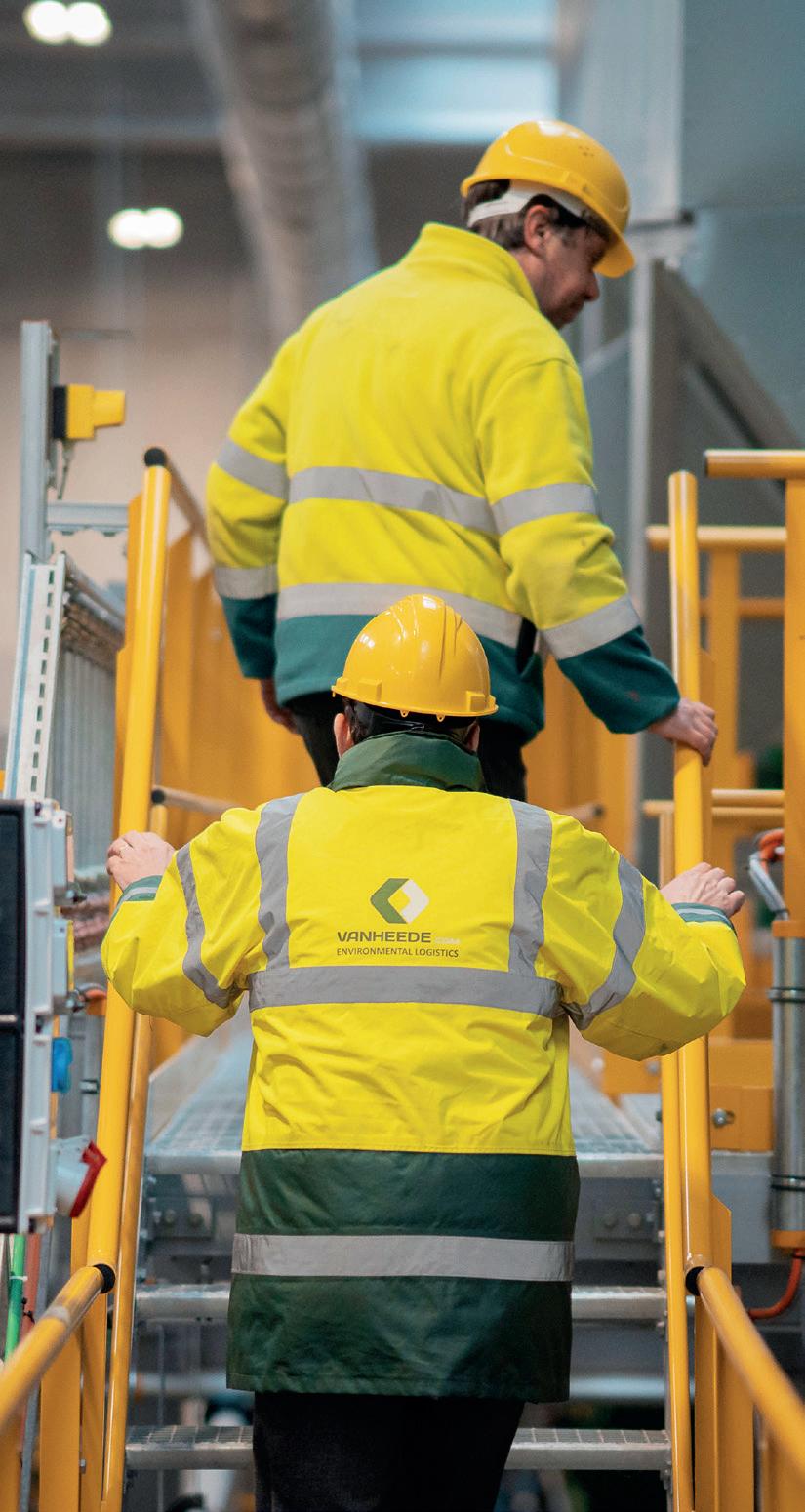
Next autumn, Vanheede will switch on its brand-new automated sorting line (Material Recovery Facility) in Rumbeke. This state-of-the-art installation, with a capacity of 100,000 tonnes per year, uses advanced technology and artificial intelligence to separate residual business waste into recyclable and non-recyclable material efficiently. This is an important step in the circular economy, enabling material that would otherwise have been heading to the incinerator to enjoy a second life. This material is then taken to our own treatment centres, partner centres or straight to raw material manufacturers.
The new plant represents an investment of €35 million and, in a collaboration between Vanheede and Fost Plus, 35,000 tonnes of PMD waste will be sorted in it every year for a period of five years from 2025.
“As a privileged partner in the circular economy, we are proud to be able to offer a new solution to save even more lost materials from the incinerator. Our new sorting facility will guarantee maximum recycling and enable us to keep the value of the materials as high as possible. This is a crucial new step in achieving the circular economy so as to contribute, together, to a more sustainable future.”
| David Vanheede, CEO
For environmental and economic reasons, Vanheede has opted for an electric crane for its new residual waste sorting line. Using an electric crane helps eliminate CO2 emissions from the workplace and electric cranes also have a much longer useful life than traditional, diesel-powered ones. This cuts down maintenance costs and saves on working time wasted refuelling the crane. In addition, it is a safer option from the fire-risk point of view.
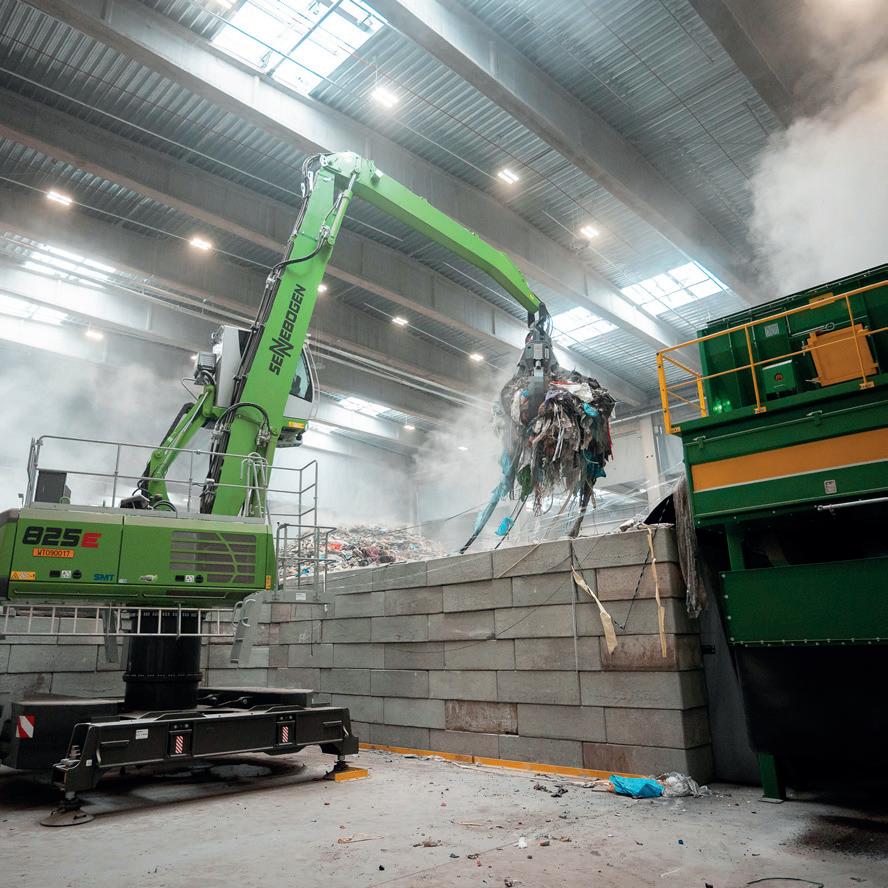
Following the redevelopment of the administrative block, the first phase of enlarging the Billy-Berclau site in France has just been completed, with the construction of operational buildings at the shell stage. At the same time, a new, three-storey building is currently being fitted out to house the new staff facilities. These will replace the existing locker rooms located in the administrative building, making way for new meeting rooms and offices.
Before this is all fully up and running, all the buildings still need to be fitted with special technical equipment and the finishing touches completed.
To meet the needs of growth, the operational area of the site has been expanded and a new concrete floor of 3,800 m² laid. This will eventually be a container park. Also included in the project is an extension to the car park reserved for drivers, bringing its final capacity to 78 spaces. The staff car park will also be equipped with charging stations.
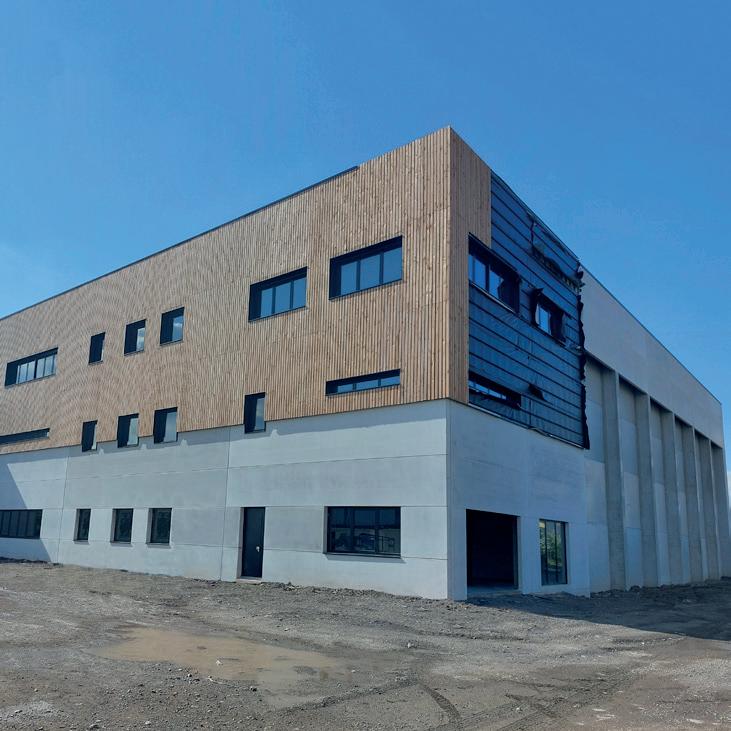

With the aim of recycling as much special waste as possible, Vanheede is building a new logistics centre (Smart Special Waste Logistics Centre) to receive, consolidate, repackage and store this waste. This project represents a total investment of some €54 million between 2020 and 2027 and guarantees the efficient processing of waste while minimising the risks for employees and the environment.
All products are stored in a centralised way in a high-security, automated warehouse, linked to an in-house automatic transport system. Thanks to a Manufacturing Operations Management System, all necessary data is kept up to date. So Vanheede always knows where any particular product is and to what risks it is exposed.
Working with firefighters, insurers and supervisory bodies, Vanheede devotes a great deal of time and effort to risk management in order to avoid possible dangers related to what we do and the hazardous products used. It starts with strict procedures in a highly secure warehouse and special detectors (point detectors, beam detection, flame detectors and air sampling). In addition, each zone is covered by fire hoses and sprinklers and there is a network of
hydrants around the building. The first response team is authorised to make an initial attempt to put out a fire or to initiate an evacuation of the premises. The extinction system of sprinklers or foam is then activated. Thanks to a high expansion foam fire extinguishing system, the warehouse can be entirely covered in a light foam in three minutes. So no-one must remain in the building.
“Risk management is an absolute priority. That is why we are investing €2.4 million in the best fire-prevention protection among other measures.”
| Mathias D’Hulster, Project Engineer Infrastructure
In the event of calamities, firewater released is recovered on-site by closing the sewers and collecting the water in a controlled way in the loading bays and other areas so that it can then be taken to a treatment centre.
* By the term special waste, Vanheede refers to all waste requiring special care. This concerns hazardous waste, but also waste requiring specific care because of confidentiality, their packaging, etc. Examples of special waste: laboratory waste, waste oil, WEEE, car batteries, aerosols, oil filters, thinners/solvents, acids/bases, waste water, fluorescent lamps, IBC container with non-hazardous waste water, cigarettes, etc.

The car park at our Quévy site has recently undergone major works, resulting in a roughly 20% increase in its capacity and the installation of 22 chargepoints. Thanks to this metamorphosis, the car park is now away from visitors, the public road and the production area, thus ensuring better flows. Improved lighting has been installed to make access to the site safer. Furthermore, a new landscaping plan is being rolled out. This will include new trees, beech hedges, and plants, making the site more attractive overall. Also, the entrance to the administrative building has undergone a broad transformation to coordinate it with the recent extension. This updating includes new offices as well as an optimised reception area for greater accessibility and a better user experience.



The consolidated balance sheet for the year 2023 closed with a balance sheet total of €213,222K. This is a sharp increase on last year. The main explanation for this is "Plan 2022-2024” - a major investment programme - and the inclusion of the firm Soret Containers & Recycling (acquired in January 2023) in the consolidated balance sheet for 2023.
On the asset side, we recorded a strong increase in the book value of tangible and intangible assets. Tangible and intangible asset investments for the year (excluding goodwill) amount to €42,192K, and include the completion of the construction of a new 3.4 MW wind turbine, and the construction of a plastics recycling line and a mixed industrial waste sorting line. The picture is completed by annual investment in containers, rolling stock and tools, and investments in adapting our pelletising lines (for high calorific waste) and de-packaging lines (organic waste). With respect to accounting policies, there were no modifications compared to the previous year.
Financial assets increased following the acquisition of Soret Containers & Recycling.
Receivables of up to one year remain more or less stable compared to 2022. These concern current commercial receivables, revenues yet to be collected, VAT and recoverable taxes.
Available liquid assets amount to €20,145K. The liquidity level is 1.19. Liquidity is sufficient to meet all obligations in the short term.
Capital increased due to the positive result of the financial year (see info under ‘profit and loss account’). Provisions for risks and charges consist mainly of the established reserve for the post-completion phase of our landfill site.
In terms of debt, both long-term and short-term financial debts increased compared to the previous year. Regarding long-term financial debts, we note that on the one hand the subordinated ‘DACAR’ loan (Dacar: family holding of the Vanheede family) has slightly reduced, on the other hand, loans granted by the bank have greatly increased (because of the running 2022-2024 investment programme); from €16.6M to €50.2M. The short-term financial debts also increased. There is an increase in trade debt, due, in part, to investment invoices coming in, a drop in fixed drawn advances and an increase in debts to banks repayable within the year.
Vanheede Environment Group’s solvability solvency ratio has increased and remains healthy at 35.90%; This takes into account the subordinated long-term ‘DACAR’loan that is added to the capital.
The annual accounts for the 2023 financial year (1 January 2023 to 31 December 2023) of Vanheede Environment Group NV and its subsidiaries, as well as the consolidated annual account, can be consulted free of charge at the Central Balance Sheet Office of the National Bank of Belgium. A brief overview of these accounts is provided in this sustainability report.
Evolution in sales revenue and costs between 2023 and 2022 is affected by the acquisition of Soret Containers & Recycling. Those reading this report must bear this in mind at all times.
Non-consolidated turnover over the year 2023 increased by 9% compared to the previous year, reaching a figure of €260.63M.
Consolidated turnover also increased by about 9% to €217.25M. Both increases in turnover (consolidated and non-consolidated) are, as previously indicated, affected by the inclusion (for the first time) of the turnover posted by the acquired company Soret.
The gross margin increased (in % of turnover) compared to the previous year, rising from around 61.23% to 62.85%. In absolute terms, the gross margin increased by more than €14M. The main cost items in the gross margin are processing and subcontracting (transport) costs. It is the latter that has risen the most sharply.
Other operating income remains unchanged compared to the previous financial year and amounts at €1.8M.
Expenses for services and diverse goods (code 61) rose by over 11%. Rental charges (mainly for use of properties) have risen, but the rise is more evident in the "maintenance and repairs", "repayment to third parties" and "agency costs” sections. Wage expenses (code 62) increased significantly by about 21%. In percentage terms, our EBITDA is down (from 15.05% as a proportion of turnover in 2022 to 13.26% in 2023). There is also a decrease in absolute terms (from €30M to €28.80M).
Annual amortisation of the consolidation of goodwill is stated separately under ‘consolidation as amortisation of consolidation differences’. It has gone from €1M to €2M (because of the new amortisation of the Soret acquisition goodwill).
Amortisation of intangible and tangible fixed assets increased by about 8.5% compared to the previous year. Depreciation remains limited and concerns provisions for the monitoring phase of our technical landfill centre and for excise duties to be reimbursed.
Financial income increased (dividends received, subsidies in the profit and loss and higher interest rates on bank loans). Financial expenses increased because of higher interest rates on new borrowing.
Exceptional income and expenses remain limited and mainly concern capital gains and losses on the realisation of fixed assets.
The consolidated EBITDA of Vanheede Environment Group amounts to €28,809K (- €1,266K compared to the previous financial year) in absolute terms. The EBIT decreased to €6,409K (- €4,316K).
Taxes dropped compared to the previous year.
The consolidated profit and loss account as per 31 December 2023 closed with a consolidated profit of €2,861K.
Summary of consolidated profit and loss account (in KEUR)
Non-consolidated profit and loss account (in KEUR)
Non-consolidated turnover over the year 2023 increased by 9% compared to the previous year, reaching a figure of €260.63M.
* See explanation page 90 - balance sheet
Investments evolution of investments (in KEUR)
Turnover evolution of turnover (in KEUR)
EBITDA evolution of EBITDA (in % of the consolidated turnover)
EBIT evolution of EBIT (in % of the consolidated turnover)
Amortisations evolution of amortisations (in KEUR) excluding amortisations of consolidation goodwill
Operational cash flow evolution of operational cash flow (in KEUR)


























We are all proud ambassadors of our company
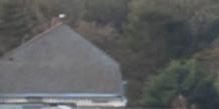








WE FULFIL OUR AMBITIONS IN A TRANSPARENT COLLABORATION. BY DOING THIS WE STAY FAITHFUL TO OUR CULTURE.

Loyal partnerships are based on trust. Common interests, ethical conduct and integrity ensure that we can always look each other in the eye.



The story of the Vanheede Environment Group is one of ambitious entrepreneurship in a rapidly expanding but complex market. It is a story of pride, of passion and of social responsibility.
It is a story in which the main characters, Herwig Vanheede and Claudette Descamps , David and Caroline's parents, decided in 1968 to quit the depressed flax sector and, in a pioneering move, devote their energies instead to waste management. From the start, optimisation and efficiency have been important concepts in sustainable waste management.
In the 1980s, a clear legislative framework was set up for the collection and, primarily, the treatment of waste. Companies seeking to innovate in the field of waste management could invest in recycling plants and thus expand their activities from simple logistics to the treatment and recycling of collected waste.

Over recent years, our company has earned an important place in the circular economy. Our sector, it turns out, is essential in closing the circle. Waste has to be treated, purified and upcycled to be reused in the regular manufacturing economy, but it is also important to sort it at source in order to give it that precious new future.
The family nature of our company is fundamental to its development. Vanheede has always had a strong vision, led by sustainable and efficient solutions, and customer satisfaction has always been the driving force for the family and those who work with us. This is why the company has always been so focused. These elements still form the core of our business culture and remain our main drivers.
Vanheede Environment Group is still a family firm, owned entirely by the Vanheede family. Shareholders come together in the General Meeting of Shareholders
Aside from the General Meeting of Shareholders, the Board of Directors has been named the administrative authority, the terms of office of the directors remaining exclusively within the Vanheede family. This Board of Directors is in charge of the organisation’s strategy direction. When necessary, the Board of Directors seeks the advice of the Advisory Board, which also includes outside members.
Our Business Units and our Group Support Services play a central role and form the beating heart of our organisation. Although they all carry out different functions, they are inseparable and complement each other perfectly. With their specific focus and expertise, the Business Units strengthen the core of our operational activities. At the same time, Group Support Services provides crucial back-up, ensuring the whole is greater than the sum of these two entities. This collaboration powers our organisational robustness. Together they are the driving force for our ongoing growth and success.
Each of these Business Units has its own structure (and corresponding organisation chart), with its own Business Unit Manager and its own management, which meets monthly.
Since the different Business Units often have common - or sometimes conflicting - interests, they coordinate their efforts at Coordination Meetings (CoMeT’s). During these meetings, they are able to exchange points of view, offer each other advice and come to joint agreements and decisions. Coordination Meetings ensure day-to-day coordination between the various Business Units, and also between Business Units and Group Support Services.
During Coordination Meetings, matters that are of interest to the Group as a whole may be discussed. For example, safety, energy issues, organising site maintenance and management, logistical challenges, planning difficulties, the marketing approach and strategy, etc.
As an organisation, we attach great importance to in-house audits carried out at regular intervals. A specific in-house audit plan is prepared each time for a period of three years.
In-house audits are carried out by an in-house team of auditors, trained for this purpose. In-house auditors are Vanheede employees working in different departments.
In-house audits serve primarily to check whether the organisation and processes are running smoothly. But perhaps even more importantly, inhouse audits often help identify weaknesses such as ineffective methods or gaps, resulting in suggestions for improving and optimising processes. So, overall, in-house audits are important tools for our organisation to measure performances, manage risks and stimulate continual growth.
In-house audits thus also contribute to raising awareness about quality and the environment and the need for the company to keep getting better all the time. In-house audits also play a role in fostering a culture of improvement and innovation.
At regular intervals, and at least once a year, we assess our entire organisation through the Management Review. It is then assessed by the management of the Business Units and the process owners.

Its main goal is to identify principle results and potential bottlenecks so that Business Unit management can take whatever measures and decisions are needed. Management can take factor this in when developing the Group’s strategy and organisational structure, and when allocating resources.
Operational process performance is also assessed annually by the process owners’ group. During this meeting, we assess the previous year’s performances and achievements, including KPIs. We also take a look at the coming year, at the challenges facing us and the plans we have drawn up to continue to improve and grow.
At Vanheede, we are aware that customer satisfaction is essential to our success which is why we attach so much importance to our annual customer satisfaction survey. We garner valuable information from this and we use customer feedback to offer an ever better service, ever more tailored to their needs and expectations. We are convinced that this proactive approach will enable us to continue lifting our service to a higher level, all while we strengthen our position as market leader.
Customer satisfaction 2023 = 4.2
We believe the satisfaction of our customers is of vital importance; we consider it a decisive factor in Vanheede’s success. Our annual satisfaction surveysent out to more than 26,000 customer contacts in 2023 - provides us with precious information, enabling us to include customer feedback in our efforts to continually improve our services. Despite our TrustScore rating was down a little during 2023, overall satisfaction remains very positive. So we will keep up our efforts to provide a quality service that meets our customers’ expectations.
Aside from the general satisfaction score of 4.2/5, we noted that customers who use our digital tools, such as the myVanheede customer portal and the Vanheede Plus app, are more satisfied with our overall service than customers who don’t (yet) use them
Indeed, our digital tools provide our customers with quick and easy access to all our services, while also offering better visibility of their activities and greater autonomy over their waste management.
Our customers recommend us
Net Promoter Score 2023 = 34
To calculate the Net Promoter Score, we asked our customers to say, on a scale of 0 to 10 how likely they were to recommend Vanheede to their friends or colleagues.
Our Net Promoter Score is 34, which demonstrates our customers consider us a reliable partner and that they are prepared to share their satisfaction with their entourage.
TrustScore Trustpilot 2023 = 4.3/5
Trustpilot’s TrustScore is a concrete way of measuring the general satisfaction of new customers, based on authentic reviews. Despite a slight drop in the result, we are proud of our score of 4.3/5, which reflects the faith our customers have in the quality of services we provide.
Like organisations all around the world, we are confronted with ever more sophisticated cyber threats. So protecting our data, our company processes and the private lives of our customers and our employees is an absolute priority. That’s why, in 2023, we have invested massively in advanced security technology, and we have also devoted time and effort into raising awareness among our employees about cyber security through training sessions and communication. We will keep up these efforts and maintain our commitment to a culture of cyber security throughout the organisation, to ensure our customers, employees and other stakeholders can trust us.

This 19th sustainability report covers all activities of the Vanheede Environment Group nv (registered office: Beekstraat 25, 1080 Brussels, Belgium) in Belgium, Luxembourg and France. The report pertains to results in the year 2023 and is prepared according to GRI standards: Core option. As a family business, Vanheede recognises the importance of reporting annually on its sustainable business practices and results. Previous sustainability reports are available at www.vanheede.com.

CEO David Vanheede is a permanent member of the Board of Directors (Vamastine bv), along with commercial director Caroline Vanheede (Vanica bv) and director Claudette Descamps (Imdaca nv). They receive advice from an advisory, made up of two external specialists, Mr Geert Asselman and Mr Peter Vandekerckhove, and an in-house expert, Evelyne Vanheede-Decrans.
In a rapidly changing world, our stakeholders’ interests and expectations can change too. To better understand the current dynamic of the market and to factor it in when making strategic decisions, we conducted a Double Materiality Assessment (DMA) in 2024. This double materiality exercise is required by the Corporate Sustainability Reporting Directive (CSRD). Its purpose is to help companies think about in-house and external sustainability impacts.
Impact of the environment on the organisation, particularly financially

As a company, we study the positive and negative impact of our activities on nature and humans (Impact Materiality). This includes the environmental impact as well as social responsibility and governance. Impact Materiality will show which aspects of our activities are the most relevant for the environment and society.
The organisation's impact on the environment and society
Aside from our impact, we also have to take into account our company’s positive or negative financial impact on the environment and society (Financial Materiality). We examine to what extent external factors influence our activities and what their financial impact might be. These include, for example, the impact of climate change, market developments, technological developments and other factors that may affect our company’s success and sustainability.
This DMA has produced a list of material topics on which we will work during the coming years. Based on these topics, we will draw up clear targets and key performance indicators for our company. This information is included in our annual sustainability report, meaning all stakeholders will have a clear idea of the global impact of what we do.
1. Mapping the context

3. Defining material topics based on the assessment of IRO
Our DMA was carried out between January and May 2024 and involved the following steps:
2. Identifying the potential material impacts, risks and opportunities (IRO)
4. Approving a definitive list of material topics
1. Mapping the context
We mapped all the company’s key activities in detail. This included our activities, our distribution channels and our plants.
In addition, we analysed our organisation’s entire value chain, up and downstream. We identified the main activities within the value chain and the stakeholders involved: suppliers, customers, distributors, waste treatment centres, end users and employees, etc.
Lastly, we identified the main groups of stakeholders within the company and the long value chain, and decided at what stage of the DMA their involvement would be the most pertinent.
After having mapped the context, we drew up an initial list of sustainable development potential material impacts, risks and opportunities (IRO) in our value chain. We turned to several sources to do this, including competitors’ benchmarking. We studied various reporting frameworks and assessed the emerging trends in the waste management sector. We also took into account our last materiality exercise in 2021. Lastly, we interviewed several key people internally. This assessment resulted in a list of 78 sustainable development potential material IRO.
Stakeholder commitment is essential in assessing sustainable development materiality topics. That’s why we collected requirements and information through an online survey with stakeholders, indepth group discussions and a series of thorough interviews.
A large group of stakeholders received an online survey enabling them to evaluate the pertinence of some sustainable development topics for Vanheede’s activities and value chain. The online survey was sent to more than 950 in-house and 2,170 external stakeholders. In all, we received 353 replies from 204 in-house and 149 external stakeholders.

We held three in-house discussion groups with various stakeholders chosen according to their expertise. The groups were made up of employees from different sites and levels. We hoped this would give us an insight into a variety of environmental and social topics. In addition, we organised 13 in-depth interviews with external stakeholders to better understand their interests and their points of view. During these consultation processes, we factored in the expertise of the stakeholders.
The materiality of the various IRO was quantitatively determined using criteria defined in ESRS 1. We set up four discussion groups: three on Environmental, Social and Governance (ESG) Impact Materiality and one on Financial Materiality.
During the Impact Materiality assessment, we determined the severity of the impact based on its magnitude, scope or spread, as well as the possibility of remedying it. As we did this, we evaluated the probability of potential impacts. Financial Materiality was determined based on the magnitude of the financial impact and the probability of risks or opportunities occurring.
To determine the materiality of IRO and validate the final list of sustainable development topics, we organised a workshop in which management took part. During this session, the materiality threshold was set. This threshold was chosen carefully because it enables us to establish a healthy balance between the number of material and non-material IRO. This enables Vanheede to concentrate on the most important IRO without ignoring pertinent aspects. The Double Materiality Matrix indicates which topics are considered material and which are not.
Two IRO with scores below the threshold were, nevertheless, considered important based on information from stakeholders and management expertise. For example, the impact of “own waste management” within the topic of the circular economy was described as material. This was despite it having a lower score because of the limited volume of our own waste compared to the total volume of Vanheede’s waste treatment. However, we strive to be trailblazers which is why we consider our own waste management to be material.
“Talent development” was also considered material, so the same goes for the general topic of "training and skills development”. In recent years, we have been working on training courses to be further developed. We attach great importance to paying enough attention to this so that our employees can develop their full potential and continue to flourish.
Climate
Integrity and ethics
Circular economy
Business operations
Government policy and compliance
Pollution
Working conditions
Well-being and health
Energy
Water consumption
Biodiversity and ecosystem


Recycling and valorisation of collected material (recycling, sorting, digestion, composting, physicochemical treatment, co-processing, incineration with valorisation)

(1) This result has been adjusted because waste from investments and construction work was isolated by Dacar and therefore not included in this calculation.
(2) Due to the construction of our new processing plant in Dottenijs, flows in 2023 cannot be considered representative.



European Sustainability Reporting Standards (ESRS) require clear and transparent communication on the following matters:
BP-1 General basis for preparation of the sustainability statements
BP-2 Disclosures in relation to specific circumstances
GOV-1
GOV-2 Information provided to and sustainability matters addressed by the undertaking’s administrative, management and supervisory bodies
GOV-3 Integration of sustainability-related performance in incentive schemes
GOV-4
GOV-5
SBM-2 Interests and views of stakeholders

SBM-3 Material impacts, risks and opportunities and their interaction with strategy and business model(s)
IRO-1 Description of the processes to identify and assess material impacts, risks and opportunities
In this sustainability report, we provide information as mandated under ESRS E1 (climate change) and, because it is highly relevant to our business sector, also under ESRS E5 (resource use and circular economy). During the 2024-2025 fiscal years, we will provide more detailed information on other environment-related topics that were identified in our double materiality assessment as material impacts, risks and opportunities.
Regarding climate change (ESRS E1), reporting must cover the following points:
ESRS 2 SBM-3 - Material impacts, risks and opportunities and their interaction with strategy and business model(s)
ESRS 2 IRO-1 - Description of the processes to identify and assess material climate-related impacts, risks and opportunities
-
E1-3 - Action plans and resources in relation to climate change policies and targets
E1-6 - GHG intensity
> Carbon footprint
E1-7 - GHG removals and GHG mitigation projects financed through carbon credits Under development
E1-8 - Internal carbon pricing Under development
E1-9 - Potential financial effects from material physical risks, material transition risks and climate related opportunities Under development
Within the resource use and circular economy (ESRS E5) theme, reporting must cover the following points:
IRO-1 - Description of the processes to identify and assess impacts, risks and opportunities of the use of material resources and the circular economy
E5-1 - Policies related to resource use and circular economy Material use and circular economy Our policies
E5-2 - Actions and resources in relation to
E5-3 - Targets
E5-4 – Resource inflows
E5-5 – Resource outflows
> Maximum material valorisation

In this sustainability report, we provide information as mandated under ESRS S1 (own workforce). During the 2024-2025 fiscal years, we will provide more detailed information on other social-related topics that were identified in our double materiality assessment as material impacts, risks and opportunities.
Within the own workforce (ESRS S1) theme, reporting must cover the following points:
S1-1- Policies related to own workforce
S1-2 - Processes for engaging with own workers and workers’ representatives about impacts
Work regulations set the working conditions for all those employed by the company, without distinction of age, gender or nationality. They take into account legal, regulatory and equality provisions in force in Belgium. They form an integral part of employment contracts regardless of the manner in which these are concluded.
As soon as a contract is agreed, employee and employer are deemed to be aware of and accept the regulations and undertake to abide by their directions. Cases not covered by the present regulations will be decided based on legal and regulatory provisions, or, failing that, by the works council, by applying the agreement reached between the employer and union representatives according to protocol.
Our culture, guided by our values, is the central theme for all our (potential) employees.
Furthermore, our policies also govern employment conditions and relations.
Our employees are essential to the smooth, day-to-day running of our organisation. So we listen to their ideas, questions and concerns. To this end, they are always able to address their line manager in an informal way.
Management also pays a great deal of attention to employee interests. The Works Council, the Committee for Prevention and Protection at Work and the union delegation get together regularly. In these consultative bodies, our employees are represented by delegates who enter into dialogue with the employer’s representatives, appointed by management.
20 34-35
S1-1
Work regulations
S1-2
S1-3 - Processes to remediate negative impacts and channels for own workers to raise concerns
S1-4 - Taking action on material impacts on own workforce, and approaches to mitigating material risks and pursuing material opportunities related to own workforce, and effectiveness of those actions
S1-5 - Targets related to managing material negative impacts, advancing positive impacts, and managing material risks and opportunities
The Works Council (CE) meets once a month (except for during July and August) and its purpose is to inform, consult, discuss and take decisions on important matters concerning the organisation and employees. It looks into business and finance matters and social matters too. So the Works Council ensures proper collaboration and communication between staff and management.
The Committee on Risk Prevention and Protection at Work (CPPT) meets once a month (except for during July and August) and is responsible for promoting employee well-being and safety in the workplace. The committee has the right to take part in and be consulted when important decisions around the health, safety and well-being of staff are being taken. It is also down to the committee to inform employees about important matters relating to health, safety and well-being.
The Union Delegation meets six times a year to discuss and reach decisions (unlike the CE and CPPT) on local and/or individual problems.
Vanheede has designated and trained persons of trust and recently introduced legislation on whistleblowers.
S1-6 Characteristics of the undertaking's employees Metrics > Employer attractivity
S1-7 Characteristics of non-employee workers in the undertaking’s own workforce
S1-8 Collective bargaining coverage and social dialogue
Union consultation is carried out via the Works Council, the Committee for Prevention and Protection at Work and the union delegation. During the preparation of a company CCT, external regional secretaries from the three national unions get together.
S1-9 Diversity indicators Metrics > Employer attractivity
At Vanheede, we are convinced that diversity is a strength and that inclusion is vital to our company’s success. Our commitment to this comes through in an employer and employee diversity and inclusion policy
ESRS S1-8
GRI 2-30
S1-10 Adequate wages
S1-13 Training and skills development indicators
Unless otherwise agreed, workers’ wages are based on an hourly rate and employees’ salaries are based on a monthly flat rate. Wages must meet the minimum wage stipulated in collective labour agreements relating to work pay and conditions, concluded within the competent joint (sub) committee of the sector to which the company belongs for the worker concerned or, failing this, the collective labour agreements reached in this field by the National Labour Council.
The employer is required to provide its drivers with a daily performance sheet. The employer and the driver are required to use this daily performance sheet to calculate the wages and also allowances. Workers, on the other hand, use a time card or some other performance recording system.
Innovation in our training policies
ESRS S1-10 Work regulations
ESRS S1-13
S1-14 Health and safety indicators
Metrics > Zero accidents
Working together for mission zero
Workers need to pay proper attention to their safety and that of their colleagues. They must inform the members of the Prevention and Protection at Work committee, or, failing that, members of the trade union delegation, or, failing that, the employer or their representatives, of any danger they notice concerning the goods, materials and equipment at their disposal. The employer is required to look into such reports and take the necessary measures. Pending a decision on such reports, workers are prohibited from using materials or equipment they deem to be defective or remaining in a dangerous situation.
The employer or their representatives are required to:
a) abide by the provisions in the General Health and Safety Regulations (RGPT) as far as workplace health, safety and improvements are concerned and, more specifically, to only use personal protective equipment that meets safety standards and to keep such PPE in good condition;
b) strictly abide by health and safety recommendations issued by sectoral agencies with specific responsibility for workplace health, safety and improvement;
c) ensure the necessary safety and sanitary conditions are present for work to go ahead;
d) inform staff of health and safety measures to be taken, especially prior to them carrying out work that presents accidents and/or occupational illness risks;
e) take immediate action likely to avert imminent dangers.
113 76-77
ESRS S1-14
GRI 403-1
Work regulations
Within the “business conduct” (ESRS G1) theme, reporting must cover the following points:
ESRS 2 GOV-1 - The role of the administrative, supervisory and management bodies Our organisational structure
ESRS 2 IRO-1 - Description of processes to identify and assess material impacts, risks and opportunities Approach to sustainability reporting
G1-1 - Corporate culture and business conduct policies Our culture and our values Our policies
2 GOV-1
2-9, 2-12
G1-1 G1-2 - Management of relationships with suppliers Non material


This is the sustainability report of Vanheede Environment Group, with registered office at Beekstraat 25, 1080 Brussels, Belgium. This report pertains to 2023; it is our intention to publish updates annually. Sustainability reports for other years can be found at https://www.vanheede. com/en/corporate-sustainability/
Since 2014, we have been following Global Reporting Initiative (GRI) standards in preparing our sustainability reports. As well as the GRI international benchmark framework for sustainability reports, we also look at how we can contribute to the United Nations Sustainable Development Goals (SDGs).
Our 2023 sustainability report draws on this expertise and the support of our consultants, slidingdoors. But it also takes inspiration from the thinking behind the European Sustainability Reporting Standards (ESRS), part of the European Corporate Sustainability Reporting Directive (CSRD), which will apply to Vanheede from January 1, 2025. We see this as the start of a common path leading to fuller and stricter reporting over the next few years, within the framework of our commitment to transparency and value-creation for all our stakeholders.


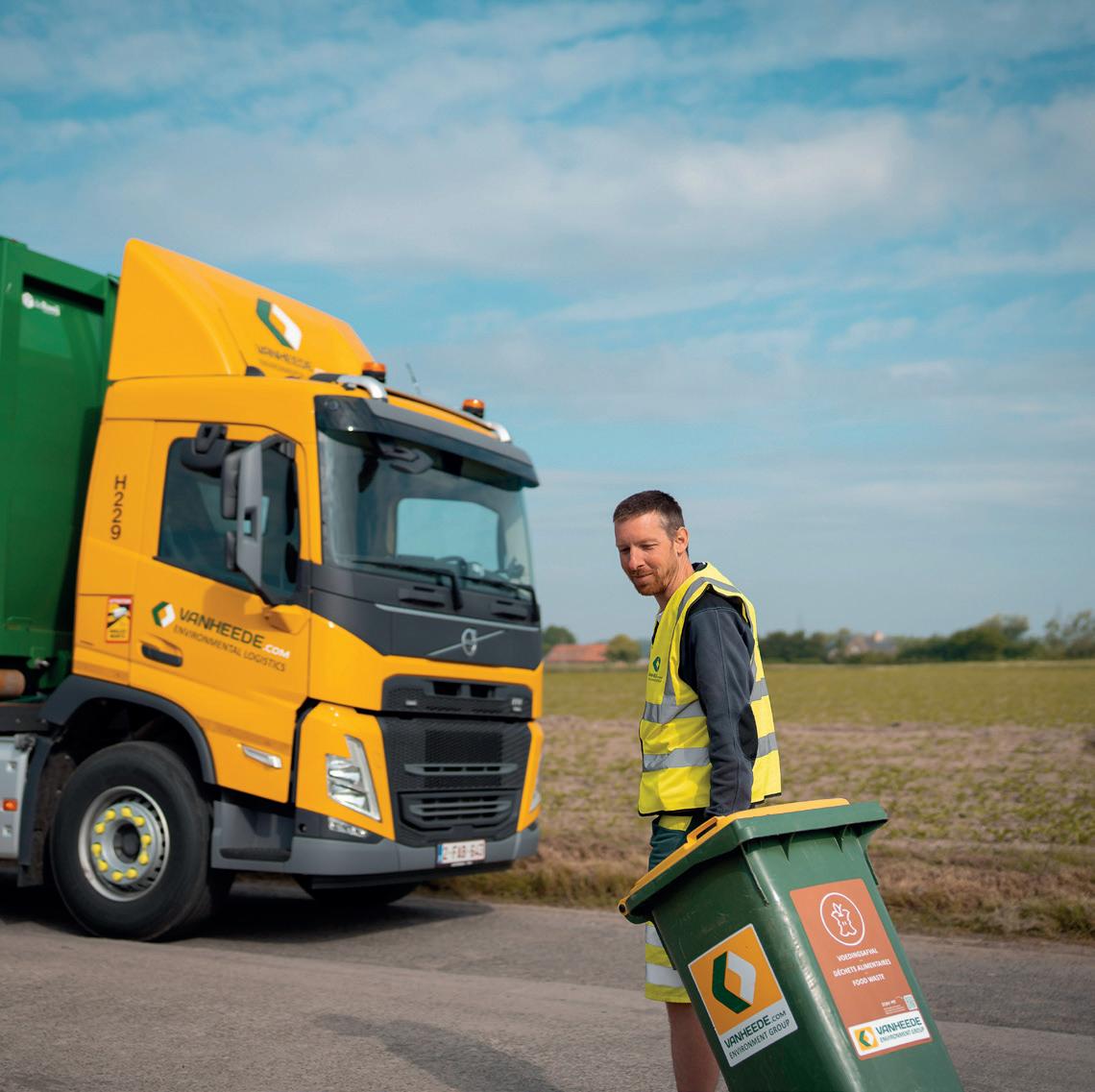

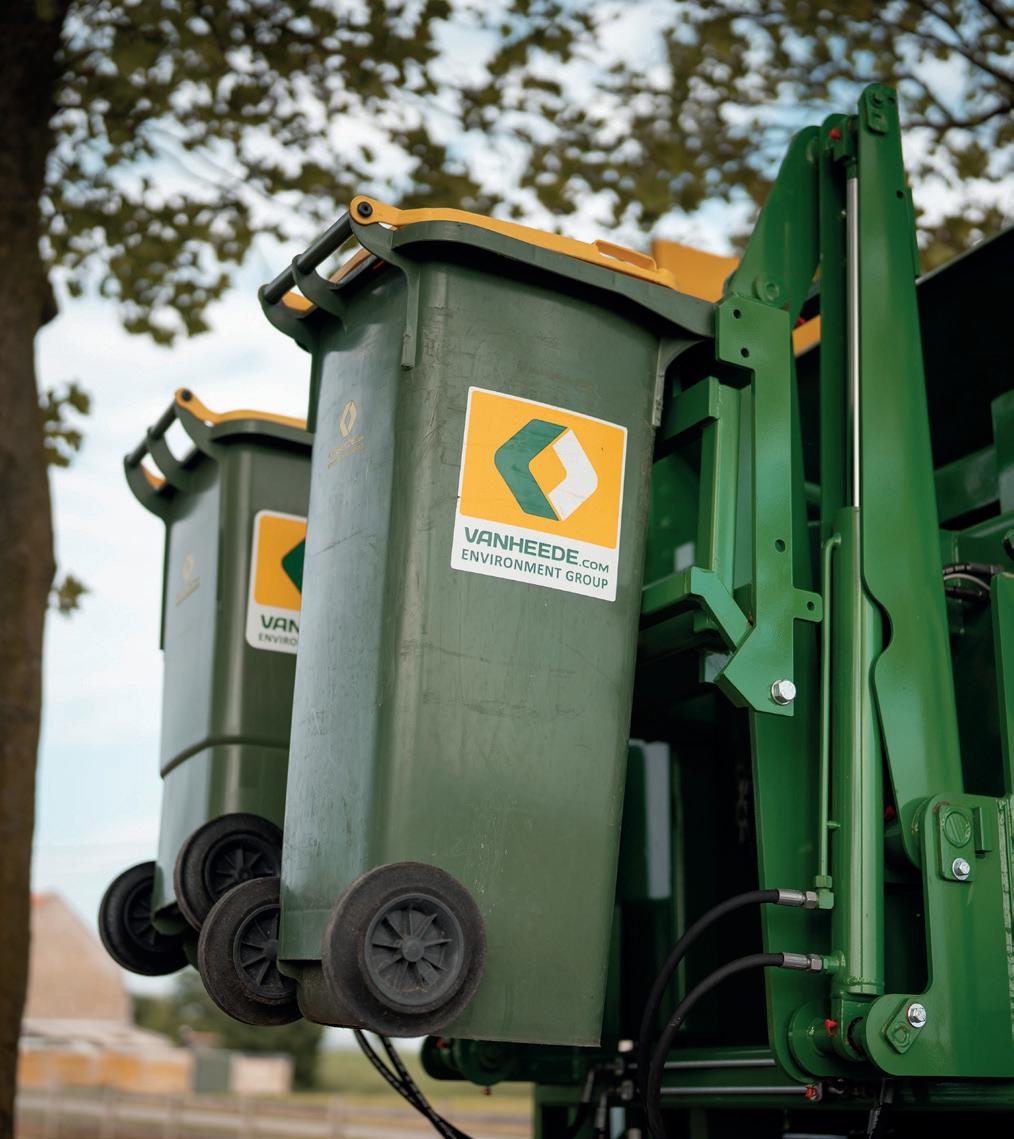
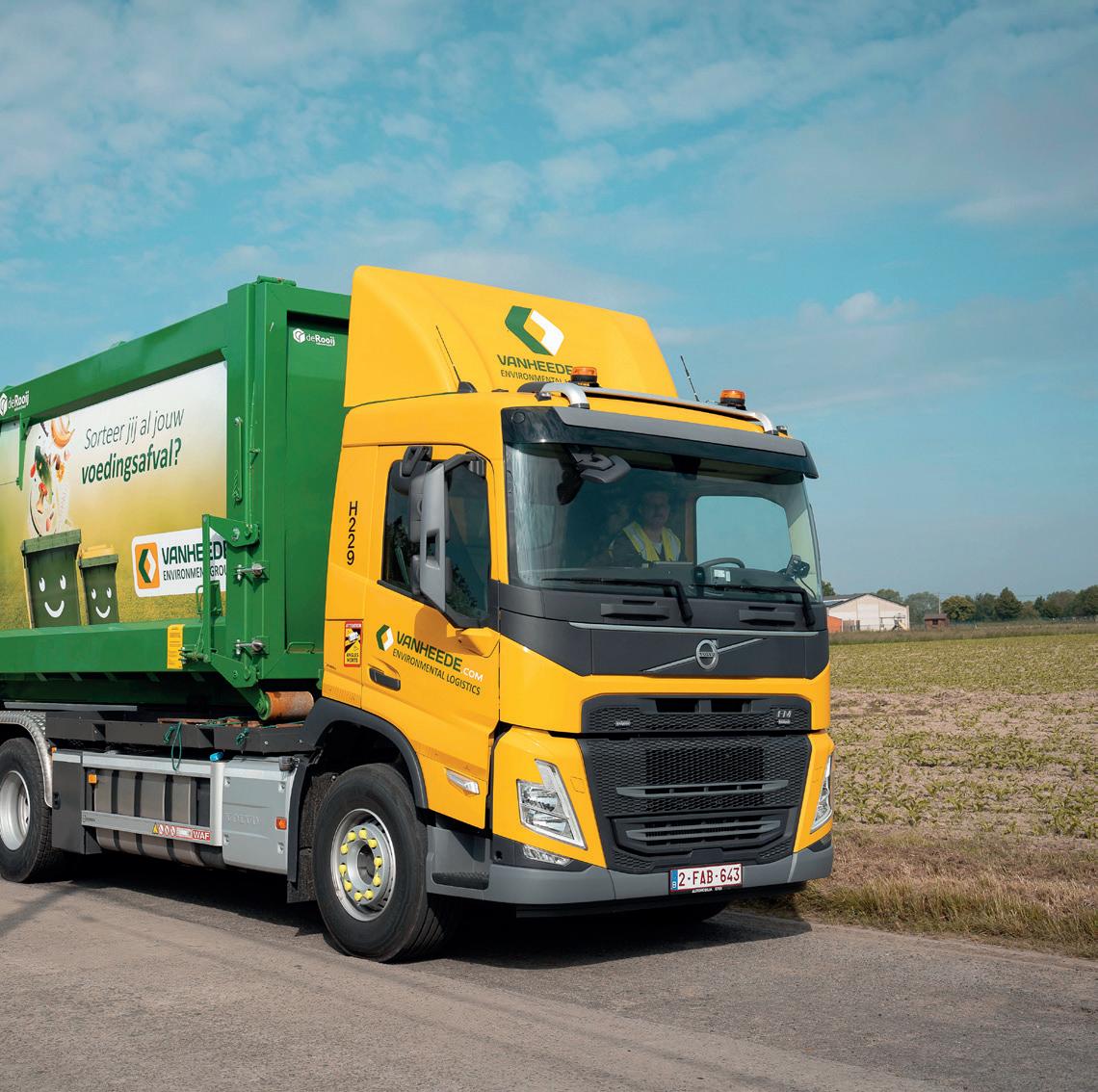
Edition:
VANHEEDE ENVIRONMENT GROUP nv Dullaardstraat 11, 8940 Geluwe www.vanheede.com
Responsible editor
Kim Delvoye: p.a. Dullaardstraat 11, 8940 Geluwe
Contact Kim Delvoye, Marketing & Communication Manager
You can send your reaction regarding this edition to kim.delvoye@vanheede.com
Special thanks to Audrey-Laure Verhost, Marketing & Communication Assistant
Photography © Loïc Naessens Photography, Shutterstock
CSR expertise and counselling © slidingdoors Greenfish part of Accenture Pantarein
Concept and realisation © www.magelaan.be | Magelaan is Print Zquadra

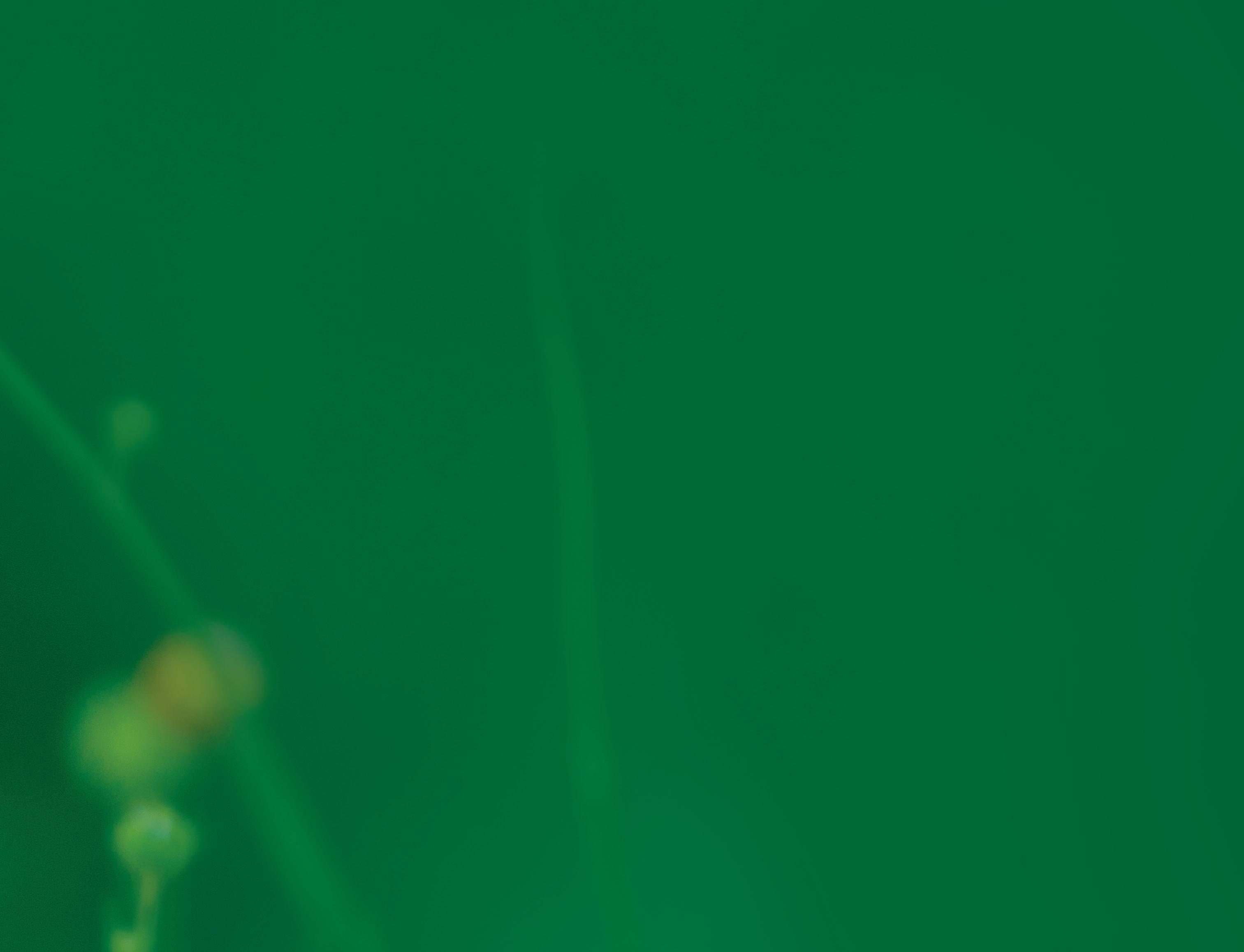





Together we realise your sustainable ambitions




























Towards a circular world, in a sustainable way